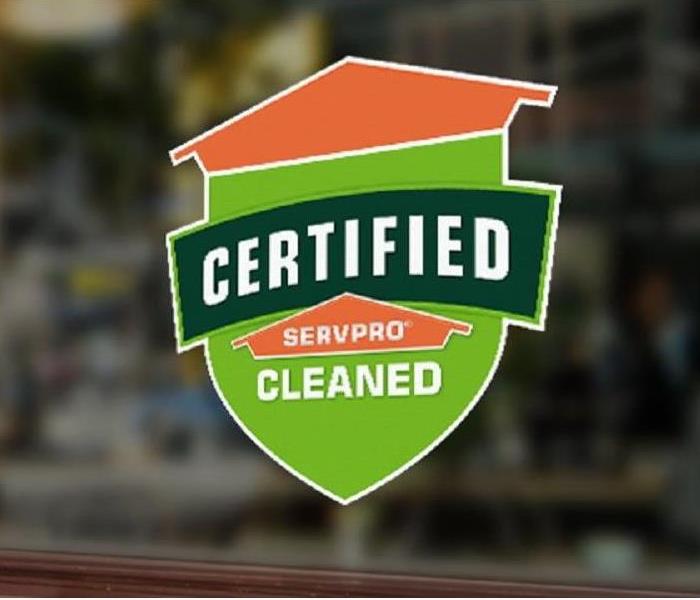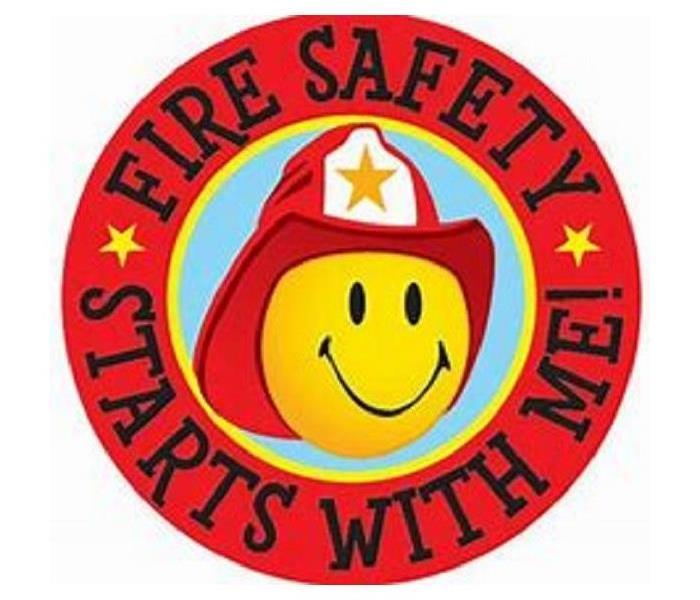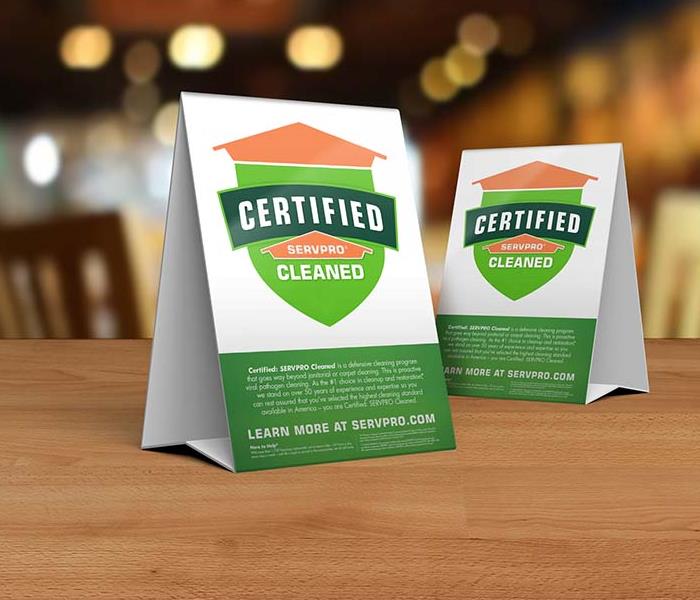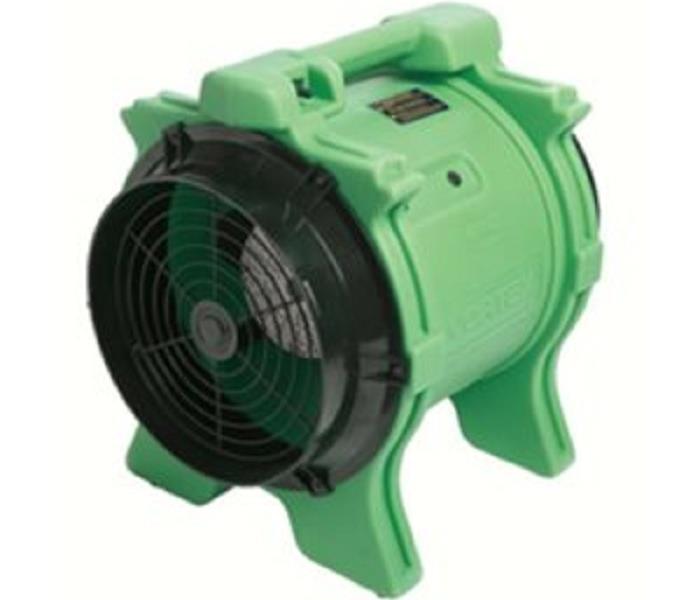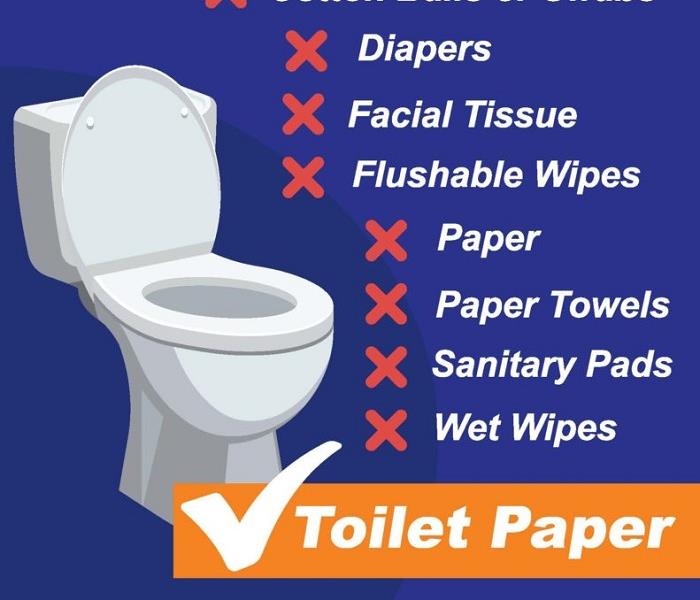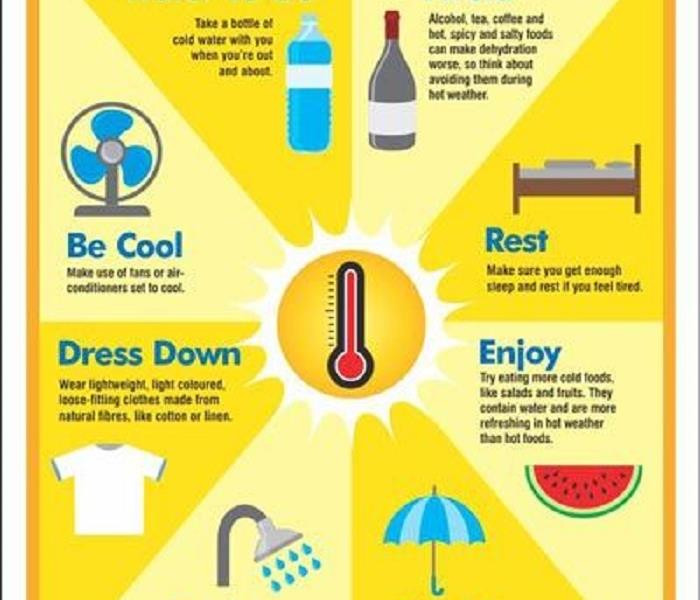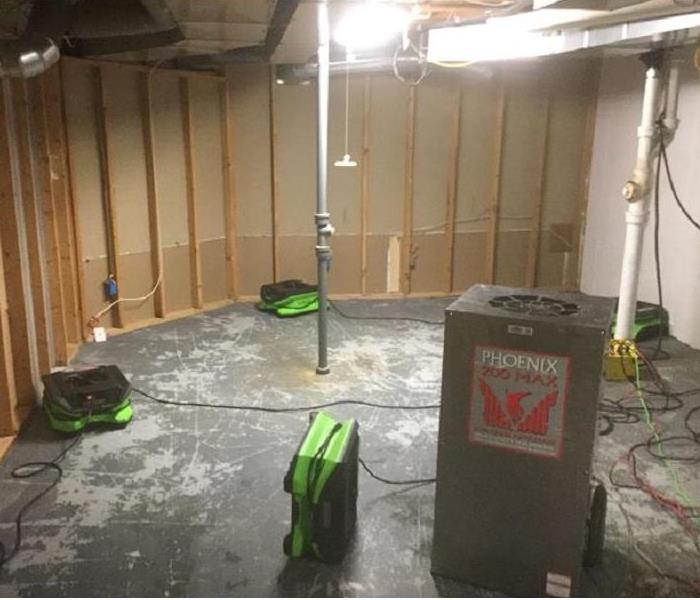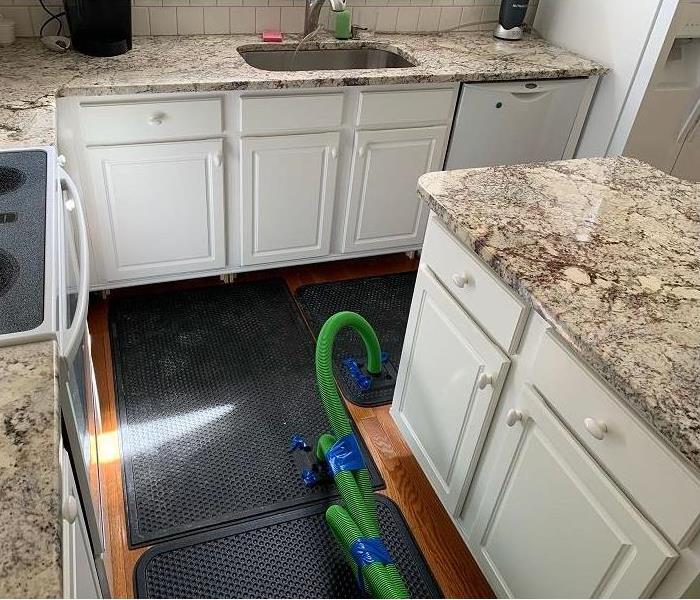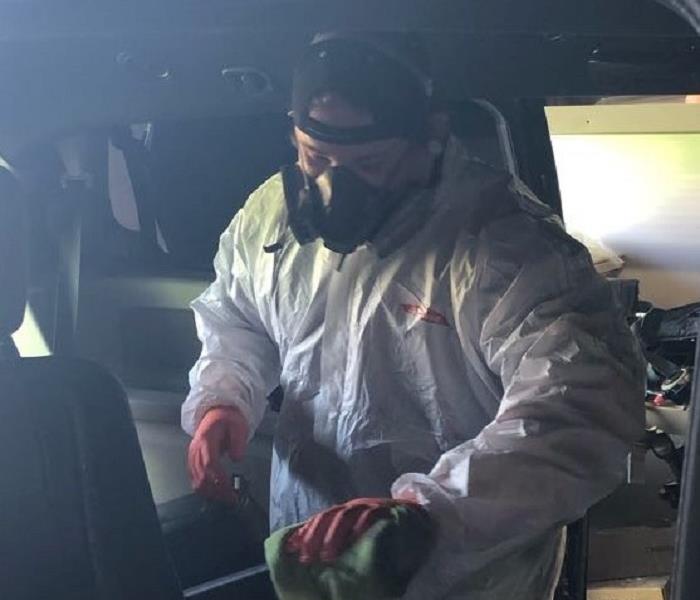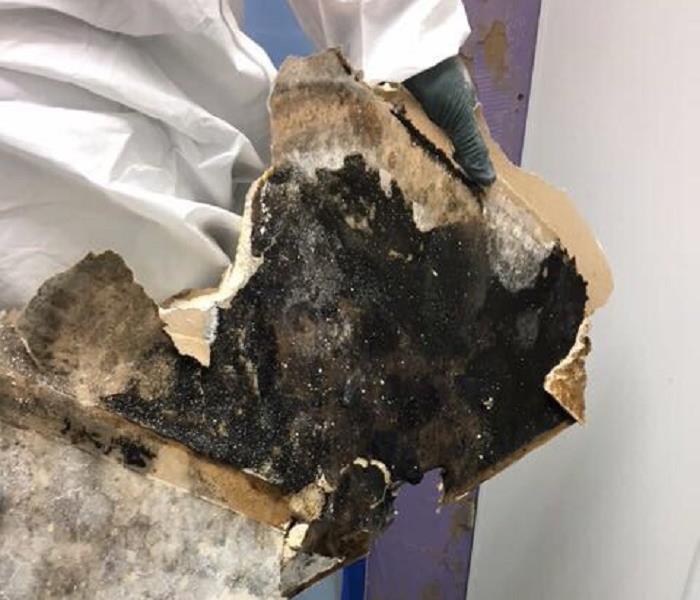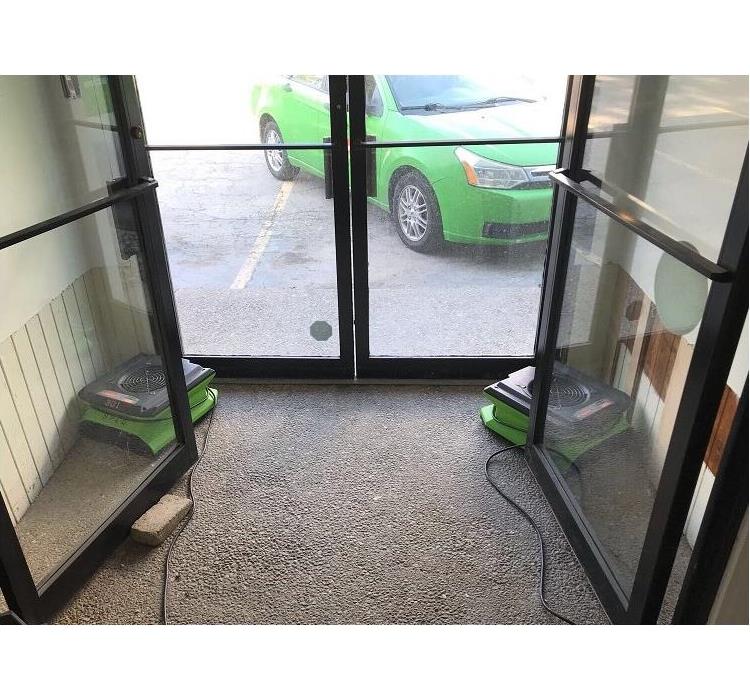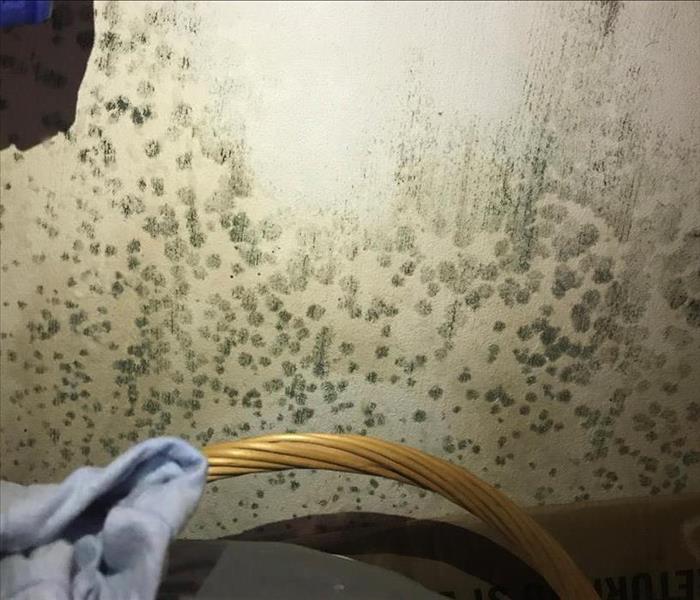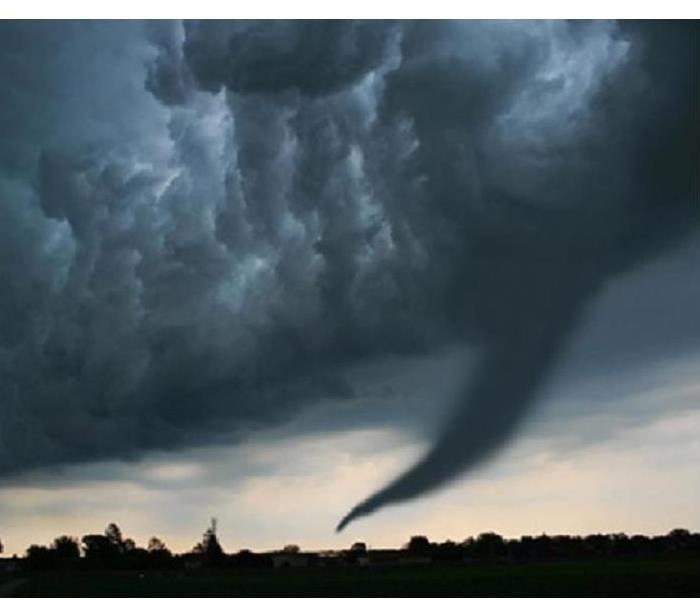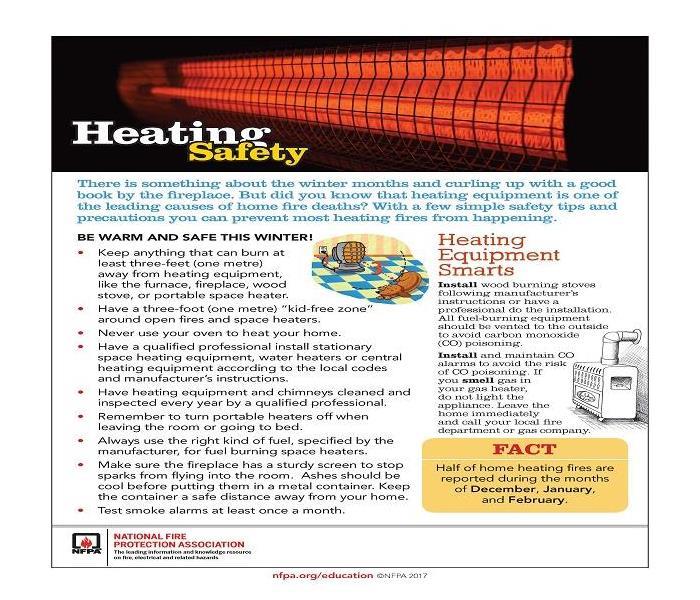Archived Blog Posts
Questions to Ask When Choosing a Service Company | SERVPRO® of Fenton/South Ballwin
11/20/2021 (Permalink)
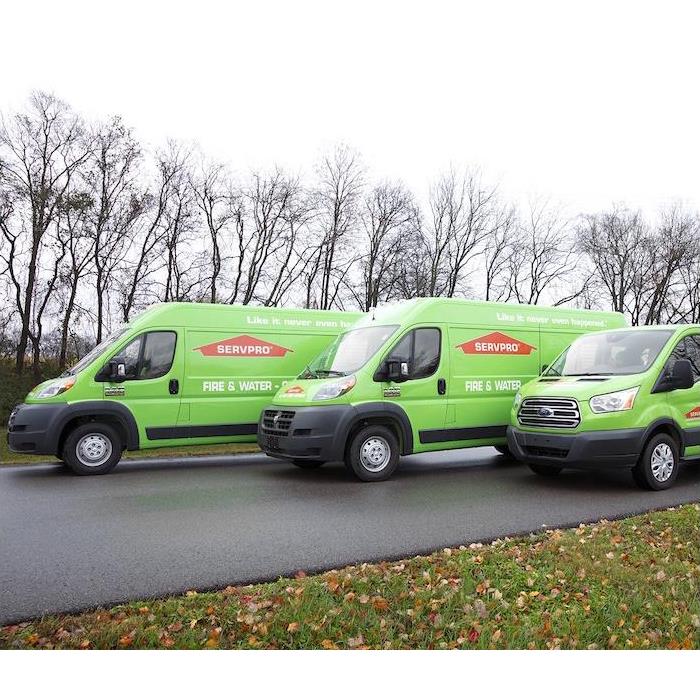 You can rest easy knowing you've got the trusted leader in the restoration industry on the other end of the line. SERVPRO of Fenton/South Ballwin.
You can rest easy knowing you've got the trusted leader in the restoration industry on the other end of the line. SERVPRO of Fenton/South Ballwin.
If you’ve been a business or home owner for any length of time, you’re probably already familiar with the queasy feeling that one day you might have to deal with the effects of a fire, natural disaster or something that would otherwise damage your property.
Situations like those require quick decision-making as you sift through prospective service companies to help you get recovery underway. But it’s crucial that you are as informed as you can be before making that important decision.
To guide yourself in the right direction, ask these questions of any service company to decide if they’re worthy of your trust.
Are They Legit?
In times of crisis, especially after area-wide disasters, it’s important to protect yourself from scammers. People may come around with business cards and offers for work quotes that seem too good to be true, but truthfully they’re just putting the “con” in contractor. Make sure any company you seek out is based locally, with a reputable service record among your neighbors and friends.
We at SERVPRO have worked hard for over 50 years to establish ourselves as the industry leader, and we’ve done it one satisfied home or business owner at a time.
Our rep is further solidified by national relationships with organizations like the PGA Tour who depend on SERVPRO to maintain and care for some of the most pristine facilities in the entire nation and to help with recovery when necessary.
Will They Be There When I Need Help?
If your water heater explodes at midnight, do you want to wait until the next morning to get somebody on the phone to help? Absolutely not.
That’s why SERVPRO is available for emergencies 24 hours a day, every single day. When you’ve got a problem, we’ve got your back fast.
Where’s a Fleet When You Need One?
SERVPRO of Fenton/South Ballwin is as local as it gets—we’re centralized right here in the neighborhood, and that helps us reach you quickly and provide expertise specific to the area. But if the need arises, we have a massive network of help upon which we can call at a moment’s notice.
When we light the signal, the 1,800-franchise SERVPRO network responds to the call.
When you call SERVPRO, you can rest easy knowing you’ve got the trusted leader in the restoration industry on the other end of the line. When disaster hits home, contact us to get our local experts and nationwide network on your side.
Cleaning and Commercial Services From the Pros | SERVPRO® of Fenton/South Ballwin
11/15/2021 (Permalink)
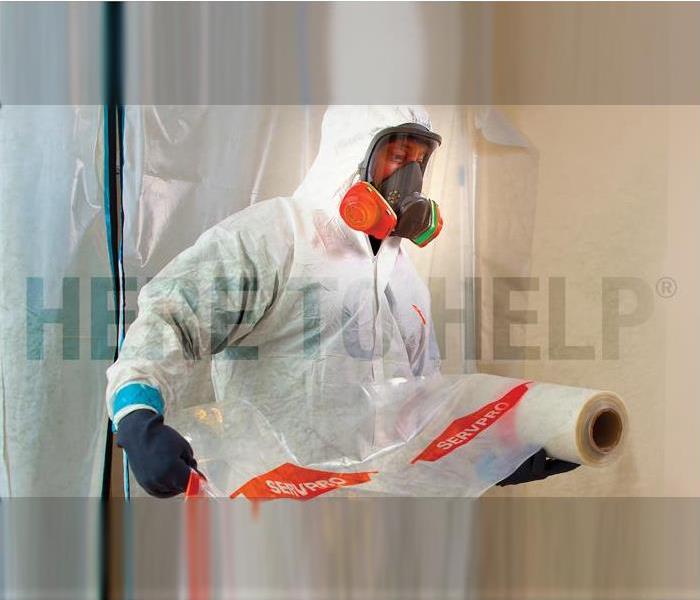 Are you ready to have the cleanest business in town? Contact SERVPRO of Fenton/South Ballwin for all your cleaning needs
Are you ready to have the cleanest business in town? Contact SERVPRO of Fenton/South Ballwin for all your cleaning needs
It’s a well-established fact that SERVPRO is the industry leader in providing restoration and recovery services for homeowners who are dealing with the effects of fire, water damage, mold and natural disasters. But did you know we also take care of business owners in the same way?
SERVPRO offers a full slate of programs and help to business owners who encounter disruptions—after all, tornadoes and floods don’t stop at commercial zoning lines.
One important distinct service we offer businesses is the fresh, safe feeling of a Certified: SERVPRO Clean. In an age where customer loyalty is more and more reliant on the upkeep of a clean facility, we’re here to help you maintain the kind of environment your teams and customers deserve.
Commercial Services for Businesses of Any Size
Only SERVPRO makes this kind of high-grade commercial cleaning the new normal for your business, and we can do it for businesses and facilities of all kinds, such as:
Chain and local retailers. Keeping a clean space is important for sellers of all sizes from the big box retailer to the local consigner.
Schools and their athletic facilities. Schools rely on sanitation more than ever, but the cleaning they’re often providing only kills half the bacteria on high-touch surfaces, and less than that on rarely cleaned items.
Senior care facilities, nursing homes and hospitals. A clean facility is an absolute must for businesses that host patients with compromised immune systems, and we can bring the utmost clean to all of them and provide patients and healthcare providers with peace of mind.
Hospitality facilities, convention centers and resorts. Hotels and convention centers are always bustling, and you’ve got to maintain a spick and span operation if you want to protect your rep and the health of your customers.
Restaurants and food production facilities. When food is the ware, sanitation is an absolute bedrock. Let us take care of the germs, and you worry about the munchables.
Property management, apartments and commercial complexes. If you’ve got offices or apartments to oversee, we can tackle the task of keeping them spotless for healthy, happy tenants.
Businesses lose $260 billion per year because of workers who either call in sick or plummet in productivity while they try to power through, passing sickness to others in the meantime. Let us destroy the bacteria that’s keeping your workers sick, so you can break free of the statistics.
When you’re ready to have the cleanest business in town, we’re ready to help. Contact your local SERVPRO to get the pros working on the cleaning so you can work on the work.
Fall Plans That Require Fire Safety | SERVPRO® of Fenton/South Ballwin
11/15/2021 (Permalink)
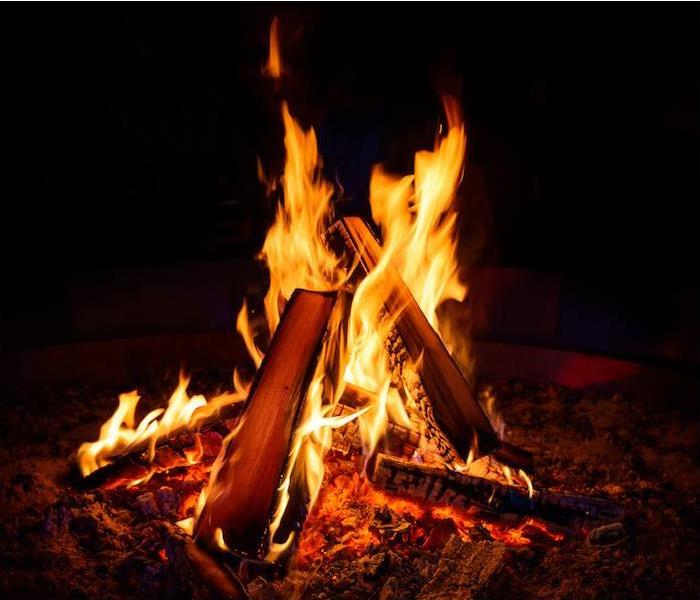 Be mindful about fall fire safety. Always remember that SERVPRO of Fenton/South Ballwin is the trusted leader in the restoration industry.
Be mindful about fall fire safety. Always remember that SERVPRO of Fenton/South Ballwin is the trusted leader in the restoration industry.
It’s autumn again, and it’s easy to tell—temperatures are lower for longer, trees are showing their loveliest colors and the Tigers are back on the field on Saturdays. Pumpkin arrangements are popping up at the local market, and you might even be shopping for Halloween costumes already.
But some of our favorite fall activities can present fire hazards if we’re not careful—so let’s review some of the most common.
Campfire Safety
Fall is the perfect time for a weekend on the campground, but it’s crucial that you know how to build and finish your campfire properly.
Make sure any open flame is at least 25 feet from tents or structures of any kind, and use a pre-built pit if one is available. Never accelerate your fire with kerosene or lighter fluid—stick to the slower but safer method of igniting kindling with a match or lighter.
Embers can stay hot and reignite for a very long time, so make absolutely sure that your ash pile is cool to the touch before you break camp, dousing every last ember with water.
Leaf Burning
If leaves are falling and piling up, you could have them hauled away, or you could, as some residents do, create a burn pile and get rid of them the old fashioned way. First you’ll need a permit from the Fenton Fire District, then you’ll want to let your local fire station know you’ll be hosting an open flame.
Don’t burn anything besides organic yard waste like leaves, trimmings and small limbs—building materials or garbage are both dangerous and illegal to burn.
Use a metal barrel to burn your trimmings if you have one—if not, make sure you’re 50 feet from your house or any buildings, and out from under any low-hanging tree limbs that could ignite. A dirt area is best as well, because there’s less likelihood of any fire spreading with no grass for it to consume.
Halloween
Decorating for fall and Halloween are favorite pastimes for many, but always respect the danger of live candles, especially if any decorations are hanging—those cobwebs are especially prone to catch fire. And if you hang any lights for outdoor parties, be sure to unplug them when not in use, and avoid extension cords if possible.
If a fire hazard should turn from potential to reality in your home, remember the trusted leader in the recovery industry and contact SERVPRO to get your property fully restored right down to the smell of smoke.
What's Causing Home Fires?
11/12/2021 (Permalink)
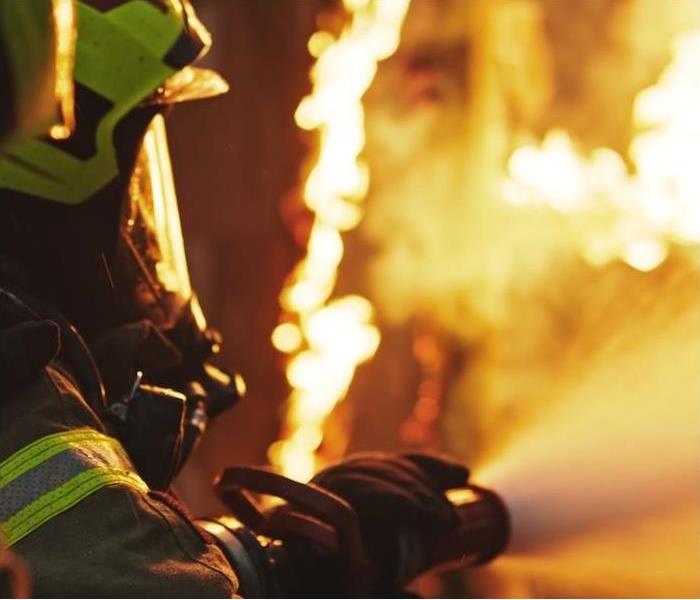 Regardless of the cause, SERVPRO of Fenton/South Ballwin are here for you if your home is affected by fire.
Regardless of the cause, SERVPRO of Fenton/South Ballwin are here for you if your home is affected by fire.
Fires at home are still a problem, despite years, nay decades, of constant education, advances in technology and regular ad campaigns to try and help us put them to an end. You’d think with so much invested in our homes, and their centrality in our daily lives, we’d be doing more to protect them.
Yet somehow a quarter of all reported fires, and more than 75% of all civilian fire fatalities happen in the home.
How can it be that one out of every four fires starts at home? Let’s look at what’s causing these fires, and the specific things making them spark.
Cooking. This is by far the leading cause of home fires and injuries (but interestingly, not fatalities). Some 49% of all home fires start in the kitchen, and the No. 1 reason is unattended cooking. That’s right, the single best thing you can do to avoid a fire at home? Pay attention while you cook.
Heating equipment. Approximately 14% of all house fires in the U.S. begin with heaters. Portable space heaters lead the charge, aided by equipment malfunctions and fires that start because clothing or furniture are left too close to heating elements.
Electrical fires. Modern homes use a lot of electricity, and some older homes don’t have wiring systems equipped to handle it. This leads to short circuits and overloads. Other causes include excess use of extension cords, over-powering lighting elements, faulty wiring, loose outlets and more.
Intentional fires. It’s hard to imagine, but there are some 28,000 intentional home fires each year in the United States. These are fires that began with the intention of burning something, not simply fires set for some other reason that got out of hand.
Smoking materials. Anytime you’re dealing with hot ash or combustible materials indoors, you run the risk of fire. Cigarettes and smoking paraphernalia are often left burning as individuals fall asleep, leading to 5% of home fires, and sadly, almost a quarter of all civilian home fire casualties.
Regardless of the cause, SERVPRO is here for you if your home is affected by fire. Contact your local team today to see how we can help.
Why Fenton Home and Business Owners Trust Us | SERVPRO® of Fenton/South Ballwin
11/12/2021 (Permalink)
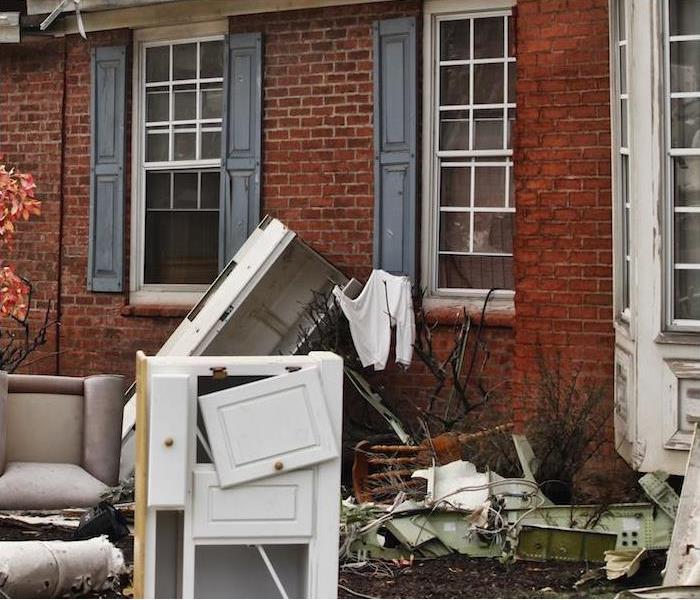 When you are dealing with any damage, immediate action is crucial. SERVPRO of Fenton/South Ballwin is your restoration expert.
When you are dealing with any damage, immediate action is crucial. SERVPRO of Fenton/South Ballwin is your restoration expert.
Being a home or business owner means holding a delicate ecosystem in balance. Everything has to be tightly managed, because if something goes off kilter, it throws everything off.
But sometimes an unforeseen event occurs that flips that balance on its side—natural disasters, fires or burst pipes are a few pertinent examples—and you’ve got something on your hands you’re not equipped to deal with.
That’s when you contact us.
We’re Always Ready and Faster to Any Size Disaster
When the balance is broken, we’re ready to leap into action. We’ll be onsite faster than anyone else in the industry, because every second counts when it comes to recovery.
Wasted time means more dangerous black mold, more waterlogged carpet or a smoke smell that won’t go away. A rapid response makes all the difference, and having a SERVPRO team right here in West Kirkwood/Sunset Hills means you get the advantage of an agile local team of experts combined with the muscle and resources of the nationwide SERVPRO network.
We’re Trained to Handle Residential and Commercial Services
One size doesn’t fit all, and your situation will call for specific solutions.
We’ve spent the last 50-plus years learning and crafting plans to meet the needs of millions of customers, and you can rest assured that we’ll give you exactly what you need and burden you with nothing you don’t.
We’ll Make It "Like it never even happened."
While our methods are numerous, our promise is one: We’re determined to leave your home or business better than we found it, with all traces of incident removed, restored and recovered.
We Offer the Services You Need in a Changing World
In the new age of global virus consciousness, part of any business plan is customer safety. Fortunately, we’ve developed the Certified: SERVPRO Cleaned program so you can safeguard employees and customers alike, and they can walk into your business with confidence, knowing you’ve put their health above all else.
Regardless of why you need cleanup or disaster recovery, SERVPRO has the tools, the technicians and the training to get your situation under control. When you’re ready to get help from the best, get in touch with SERVPRO of Fenton/South Ballwin.
Where to Find Common Sources of Water Damage | SERVPRO® of Fenton/South Ballwin
11/12/2021 (Permalink)
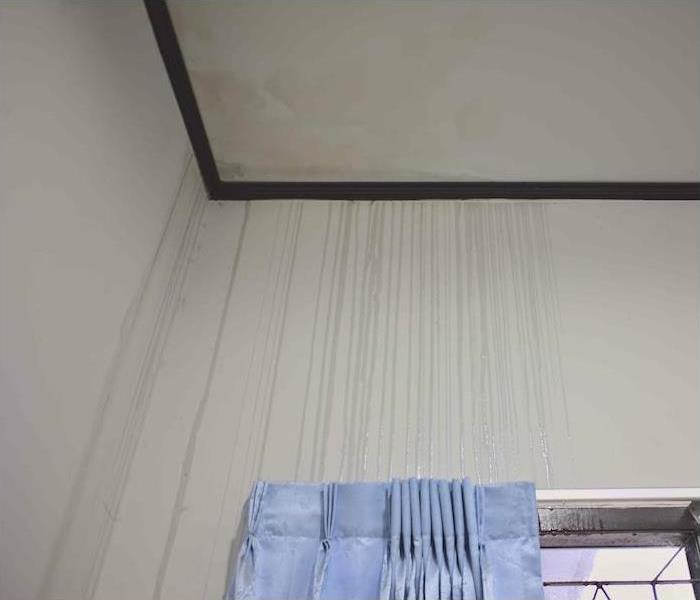 A water leak can turn into a big problem. Contact the SERVPRO of Fenton/South Ballwin team if you are dealing with any water damage.
A water leak can turn into a big problem. Contact the SERVPRO of Fenton/South Ballwin team if you are dealing with any water damage.
Where to Find Common Sources of Water Damage | SERVPRO® of Fenton/South Ballwin - https://www.SERVPROfentonsouthballwin.com/blg
Chances are good you didn’t wake up this morning with your fingers crossed, hoping you’d get to deal with a burst pipe or water running down your wall. Let’s be real—nobody wants to deal with water leaks, but as homeowners, sometimes we get no choice.
If you’re vigilant, however, you may be able to spot warning signs, or make necessary updates before aging pipes wear down. Here are a few places to keep your eyes on.
Toilets. Your toilet always has water running in and through various seals and tubes, and over time, it’s prone to develop leaks, particularly in the flapper or the valve seal, which are inexpensive and simple to replace.
Appliances. You likely have several appliances that use water hoses—dishwashers and refrigerators often develop leaky water supply lines—and traditional tank-style water heaters have been know to explode when they get over about 10 years old.
Clogged gutters. Shimmying up the ladder is inconvenient at best, but it’s a surefire way to prevent clogged gutters. Otherwise, dirt particles, leaves and other debris settle and compact themselves into an impassable dam, which means water finds its way up into and under your roof and trickling down your interior walls.
Roof damage. Your roof takes a beating. It’s the main line of defense against harsh sunshine, rain and hail, but all those things over time cause shingles to break, bow up or otherwise dissipate.
Pipes. Heavy water pressure or any oxidization can cause pipes to crack or fail, sending water spewing everywhere. And it’s not only an indoor threat—you may not even know that tree roots can find their way into the tiniest cracks in a sewer line or outdoor pipe and end up causing a complete blockage.
Blocked garbage disposals or other pipes. Eggshells, coffee grounds, and even rice or pasta can glob up in garbage disposals or soak up enough water to clog your sink drains. And what’s more, if your p-trap joints aren’t secure, the plunging you may have to do to unclog those drains can cause your pipes to separate and release all that water and gunk into your cabinetry or floor.
You can’t foresee every leak, but with an eagle’s eye, you can see some of them coming. Replacing hoses and keeping an eye on these common leak areas can prevent a number of water damage scenarios.
If a water leak erupts into a big problem at home, you’ve got the best team in the business on your side. Contact SERVPRO today so we can get started.
The Building Envelope - Effects on the Drying Process
7/19/2021 (Permalink)
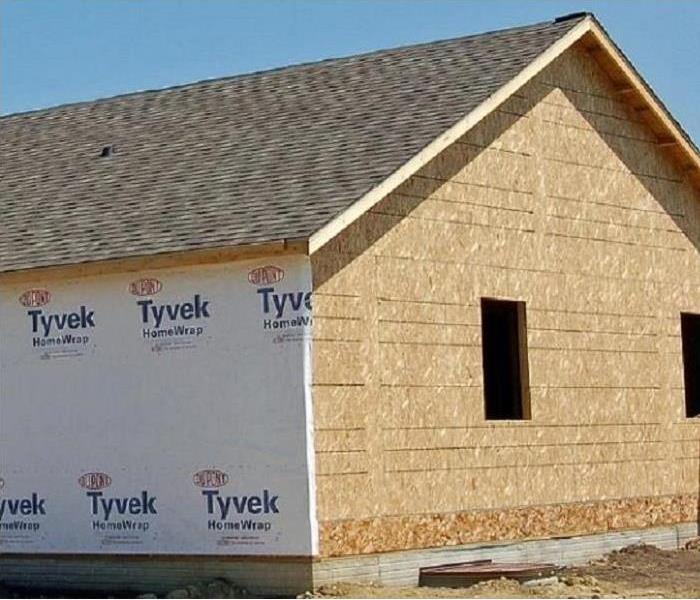 Building and Materials can affect the outcome of the drying process
Building and Materials can affect the outcome of the drying process
Building and material science is an ever-developing field. Our industry understands more about various materials and how to dry those materials than ever before, but there is certainly more for our industry to learn. As a restorer, our understanding of how buildings are put together (residential and commercial) will determine the effectiveness of our moisture inspections, material and assembly identification, and creation of a detailed demo and drying plan. The more understanding about buildings and materials, the more issues we can anticipate (and the more surprises you can limit).
A solid grasp of building and material science separates the “novice” who simply places drying equipment and the “professional” who establishes a drying plan based on project needs and challenges.
The building’s envelope can have a profound impact on the effectiveness of the drying plan. This is more concerning when outside weather conditions are not favorable for drying (high humidity).
The building envelope separates the interior of a building from the outside environment. The building envelope can include roofs, ceilings, exterior walls, doors, windows, finished floors, and foundations. The building envelope has several purposes such as keeping out wind, rain, and ground water, as well as controlling the transfer of energy between the inside and the outside. Some people refer to this energy control as the energy efficiency of the building. Ideally, the building envelope helps maintain a comfortable temperature and humidity for occupants, while providing adequate ventilation inside. When done properly, the building envelope can help avoid problems such as mold, poor indoor air quality, and water intrusion. Because of the potential impact of energy, air, and moisture movement, even small changes to the envelope can have a dramatic effect on the entire structure.
Structures are not airtight, meaning they are going to leak air. The IICRC S500 identifies three types of building envelopes: tight, moderate, and loose. These are based on the envelopes “ability to keep the outside conditions from adversely influencing the drying environment”. The S500 somewhat defines each of these.
Tight envelope – “drying conditions can be controlled without significant influence by the outdoors”.
Moderate envelope – “drying conditions will be influenced somewhat by the outdoors”.
Loose envelope – “drying conditions will be significantly influenced by the outdoors”.
There are several factors that help our project managers determine whether the building envelope is tight, moderate, or loose. This includes how often doors or windows are opened; as well as damage to the envelope such as roof, window, or weather strip damage. Our project managers and SERVPRO of Fenton/South Ballwin must also consider the building construction such as vapor barriers or insulation. Even the age of the structure is an indicator. Older homes (built prior to 1990) typically have a loose envelope due to the lack of focus on energy efficiency when they were constructed.
Movement of Moisture has a direct effect on the drying process
7/19/2021 (Permalink)
 Movement of Moisture in the Drying Process
Movement of Moisture in the Drying Process
Water enters materials in two primary ways: (1) from absorption of water in direct contact with materials and (2) from absorption of excessive moisture in the air. To understand how materials dry, we should learn how moisture moves through and from a material. Moisture moves by four mechanical processes: Liquid flow, air movement, capillary suction, and vapor diffusion.
- Liquid flow. We most often observe moisture movement as water flows in liquid form. Liquid flow occurs as rainwater leaks through a roof, ground water soaks through a foundation, or water pours from a broken water pipe.
- Air movement. Moisture in the air is carried by moving air. Air moves from high air pressure areas to low air pressure areas and brings moisture with it. Moisture moves by airflow through cracks and small openings in a building’s envelope or as air pressure moves moist air through a chimney. Moisture and air moving from outside a building to the inside is called infiltration; moisture and air moving from inside to the outside is called exfiltration.
- Capillary suction. Liquid moisture can move through a narrow pathway due to contact between the moisture and the surface of the path. Capillary suction allows liquid moisture to move through the pores of porous materials.
- Vapor diffusion. Water vapor moves as a gas through materials. Water vapor moves from areas of high vapor pressure to areas of low vapor pressure. Whether moisture moves through a material by vapor diffusion depends on whether differences in vapor pressure exist across the material. How fast moisture moves by vapor diffusion depends on how permeable the material is.
By understanding how moisture moves, our highly trained technicians at SERVPRO of Fenton/South Ballwin can make sense of the pace of their drying efforts (whether ideal or not) and how to potentially speed up the drying process for certain materials.
You should consider having the air ducts in your home cleaned
7/19/2021 (Permalink)
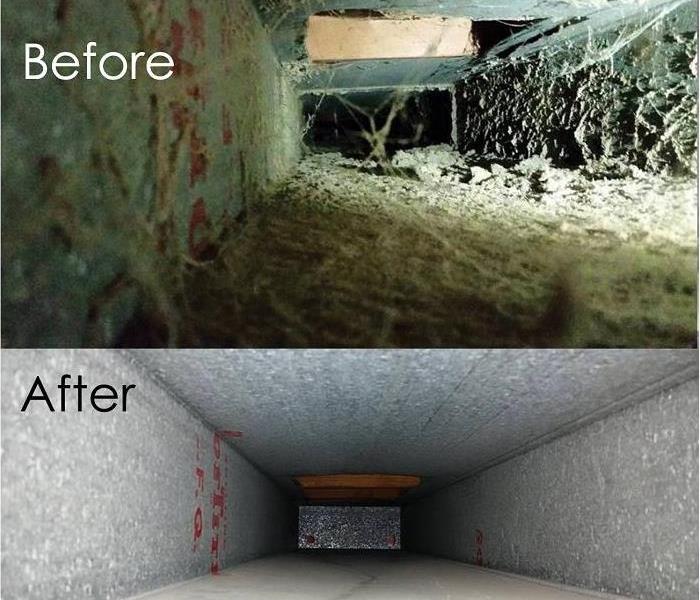 Before and After Air Duct Clean
Before and After Air Duct Clean
Duct cleaning generally refers to the cleaning of various heating and cooling system components of forced air systems, including the supply and return air ducts and registers, grilles and diffusers, heat exchangers heating and cooling coils, condensate drain pans (drip pans), fan motor and fan housing, and the air handling unit housing.
If not properly installed, maintained, and operated, these components may become contaminated with particles of dust, pollen, or other debris. If moisture is present, the potential for microbiological growth (e.g., mold) is increased and spores from such growth may be released into the air of your home. Some of these contaminants may cause health effects in people if they are exposed to them.
Ventilation systems are often the biggest culprit in poor indoor air quality. Make it a priority to inspect the ductwork of your home.
If your HVAC has been operating for some time without attention, it could be circulating one or more of the following:
- Dust
- Pollen
- Odors
- Dirt and debris
- Other contaminants
- The benefits of servicing your HVAC unit include:
- Helps to restore peak energy efficiency.
- May help to eliminate offensive odors.
- Helps reduce the potential for mold growth.
For more information on air duct cleaning, call SERVPRO of Fenton/South Ballwin at 636-527-5990.
Be Prepared: Locate Your Water Shut Off Valve
2/4/2021 (Permalink)
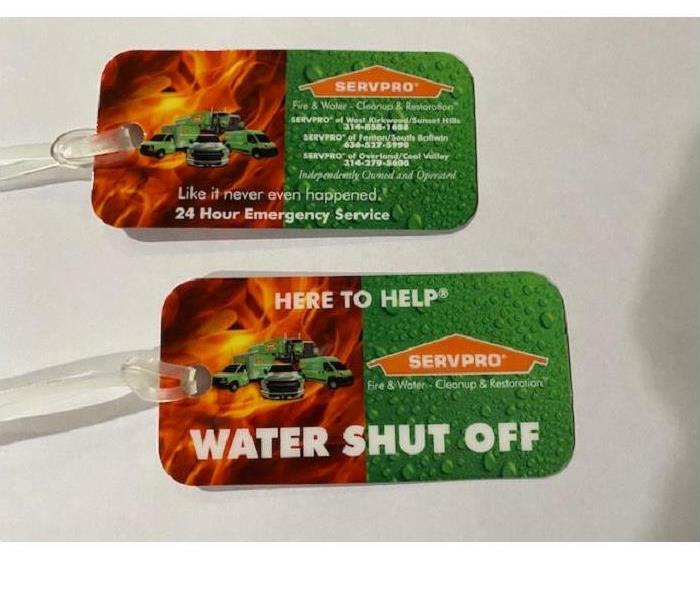 Be Prepared BEFORE Disaster Strikes!!!
Be Prepared BEFORE Disaster Strikes!!!
Water gushing uncontrollably through your house or business is hazardous, unsafe, and will quickly cause major flood damage. If that water is coming from your home's own water supply, and not from outside sources, you can and should shut it down very fast. NOW is the time to locate your Water Shut Off Valve. Once found, make this known to all family members as they may be home alone when disaster strikes! Our office offers FREE Shut Off Tags that you can place as a reminder to all. The quicker the water supply is shut off the less damage to your home or business.
Three Ways to Quickly Locate the Water Shut Off Valve
Find the Water Shut Off Valve on the Inside Perimeter
The first step is to physically search for your house's main water shut off valve on the inside of the home. Typically, it will be located on the perimeter of the house since that is where the water first enters your house. Also, stay on the side of the house that is facing the street. Your water main begins at the street and heads in a straight line to your home. When you find the valve, turn the handle or knife-style valve.
Find the Shut Off Valve on Your Property Inspection Report
If you still cannot find the cut off valve after physically searching for it, one alternative is to check the property inspection report that was completed for you when you were in the final phases of purchasing your home. Look in the plumbing section of the report. This section should locate the shut-off valve for you and have a photo of the valve. Even if the water system was not defective at the time of the property inspection report, the report should still note the locate the shut-off valve as a matter of course.
Find the StreetSide Shut Off Valve
If the previous methods fail, there is another valve located at the beginning of your water main, at the boundary line of your property and the street or sidewalk. Find the ground-level metal or plastic utility box trap door located at ground level. Call the water company's 24-hour emergency contact line. Staff may direct you to shut off the valve by yourself or to wait for an emergency dispatch team.
Call our office at 636-527-5990 or email us at office@sevprokirkwood.com to request your FREE Shut Off Tag!!! #SERVPROFENTONSOUTHBALLWIN
Frozen Pipes
2/3/2021 (Permalink)
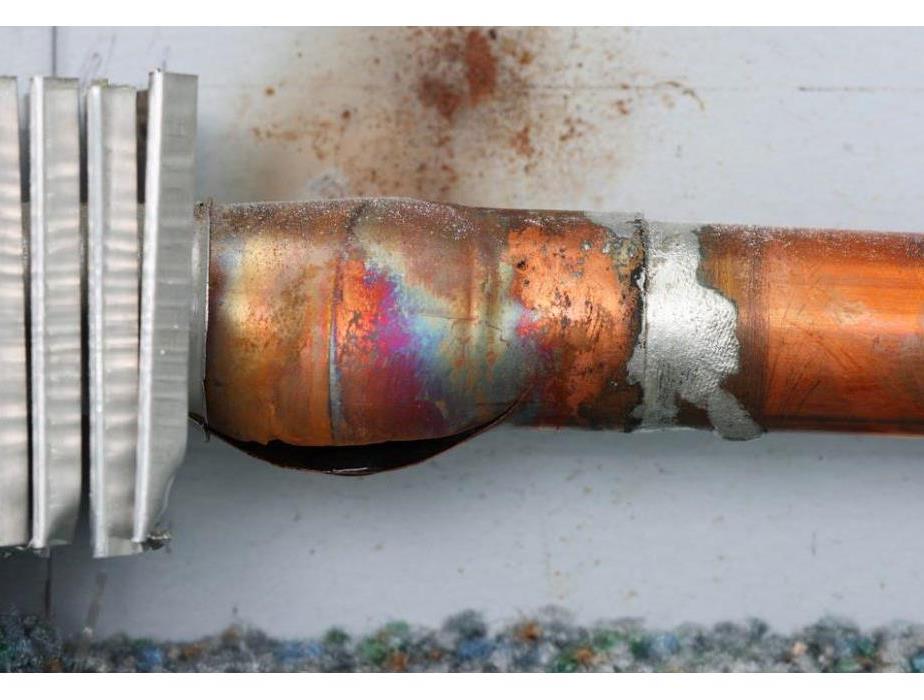 This frozen pipe could spill over a couple hundred gallons of water into your home or business within a couple hours causing extensive water damage!!!
This frozen pipe could spill over a couple hundred gallons of water into your home or business within a couple hours causing extensive water damage!!!
Bursting water pipes are a major concern when winter temperatures drop below freezing. But why do frozen pipes burst?
Perhaps surprisingly, freezing pipes do not burst because of ice expanding in place. Instead, it has to do with pressure inside the pipes.
When water freezes, its molecules crystalize into an open hexagonal form, which takes up more space than when the molecules are in their liquid form — that is, the water molecules expand as they freeze.
As the ice expands, it pushes water toward the closed faucet. This causes an immense amount of water pressure to build between the ice blockage and the faucet — eventually, the pipe ruptures under the pressure, usually at a spot where there is little or no ice.
The pipe areas upstream of the ice clog are not typically in danger of bursting because the pressure is not great enough. In this case, the water is not blocked, and can always retreat to its source.
Pipes that are the most at risk of bursting are those located outside of building insulation, or those in unheated interior areas, including basements, attics, and crawl spaces.
Heating or insulating these vulnerable pipes with fiberglass or foam sleeves can help prevent them from bursting. Additionally, keeping the facet open and letting the water run, even at just a trickle, will help prevent the water pressure from building to dangerous levels.
Prepare your home or business before the bitterly cold temperatures arrive!!
Team of Over 1700 Franchises Nationwide
9/29/2020 (Permalink)
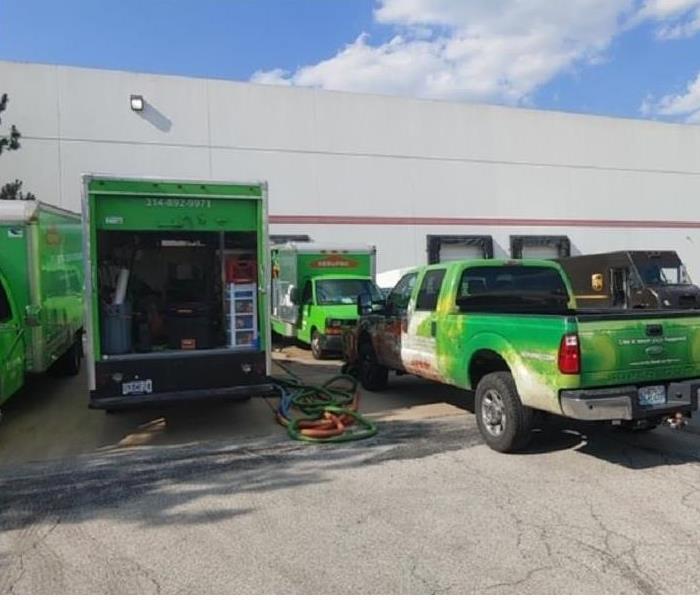 Commercial Water Damage in Fenton, MO
Commercial Water Damage in Fenton, MO
Size is not always an indicator of strength; but when you are a restoration company with the resources of over 1,700 franchises- size matters.
At SERVPRO of Fenton/South Ballwin we are equipped to handle a loss of any size. But the question always comes into play, what happens when there are multiple losses.
Typically, we see this scenario play out during natural disasters or major storms. The benefit that we have at SERVPRO of Fenton/South Ballwin is not only do we have the capacity to produce any size loss; but we can combine our strength with a large network of other SERVPROs nationwide that can provide assistance and extra equipment.
At SERVPRO of Fenton/South Ballwin not only do you get the local franchise, but you also get the strength of one of the nation’s largest restoration company. In the last few years, we have been fortunate to have the network of SERVPRO’s to provide us more equipment and PPE during nationwide shortages.
If you have experienced fire or water damage, we are always here to help! Call us 636-527-5990 so we can address your damages quickly.
Smoke Odor After a Fire
9/29/2020 (Permalink)
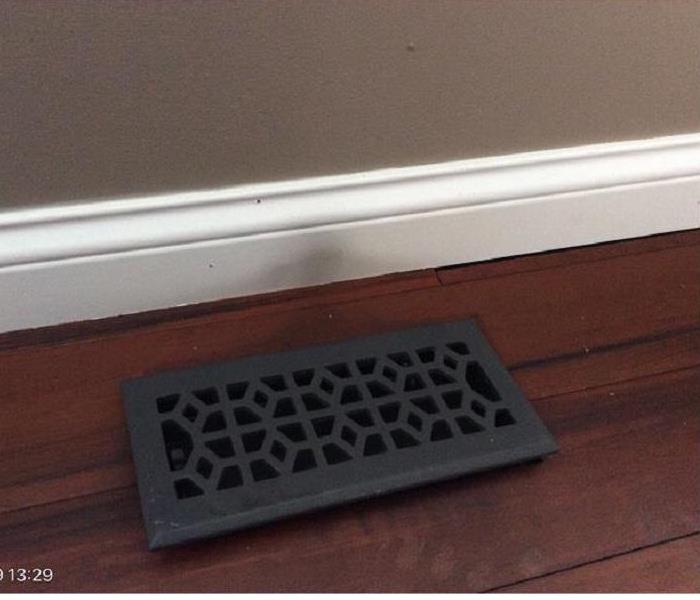 Fire Damage in Ballwin, MO
Fire Damage in Ballwin, MO
Removing smoke odor after a fire is a difficult task. To achieve complete smoke smell removal, the remediation process must include specialized equipment and techniques that only a professional restoration company can provide. Thus, we do not advise homeowners to tackle this task themselves. Check out the steps involved in smoke damage restoration below.
The types of smoke odor
Smoke results from incomplete combustion and consists of persistent particles (soot), oils, and gases. The pungent smoke odor comes from volatile molecules that materials release when burning.
Smoke odor can result from burning protein (meat), natural materials (wood, cotton, etc.), synthetic materials (e.g., plastic, nylon) and more. With so many substances that can burn, the restoration process requires technical knowledge and complex procedures.
How to remove smoke smell from properties
Removing the source of the problem
The first and most important step in smoke odor removal is to remove the source of the odor(s). This involves removing burnt items, such as cabinets, furniture, drywall, and non-salvageable contents. The items can be either discarded or restored, depending on their condition.
Cleaning the salvageable contents
Our trained technicians clean the salvageable items with appropriate products.
Cleaning the air ducts
Smoke, soot, and odors from a fire will penetrate the duct system and any dust or other particles inside of that system. Thus, cleaning the ducts early in the smoke smell removal process is essential to preventing the HVAC system from re-contaminating areas that have been cleaned.
Removing the smoke smell
The final stage is removing the lingering airborne odor. To accomplish this task, a variety of techniques that can be utilized, but they all share a common goal — complete smoke odor removal. Here are some examples of proven systems:
- AIR SCRUBBING. A technician will use a high-efficiency particulate arrestor (HEPA) air scrubber which can remove 99.97% of particulates from the air. Removing these airborne particulates removes additional source materials for odors.
- THERMAL FOGGING. Fogging uses a petroleum-based deodorizer emitted via a thermal fogging unit. It fills the affected area with a mist-like deodorizer. Fogging counteracts odorous molecules by using fragrance modification for permanent odor neutralization. Prior to fogging, technicians put out all flames. Everyone in the treatment area must wear respiratory protection equipment or leave the area.
- OZONE GENERATION. This is one of the most popular and familiar processes for removing airborne smoke odor molecules, including hard-to-neutralize protein smoke. Ozone is a powerful oxidizer that neutralizes odorous molecules by releasing additional oxygen into the air. Ozone, while an effective odor remover, is not an “air purifier.” Customers should not be present when an ozone generator is in operation. Personnel should enter the treatment area only briefly to turn the ozone generator on or off. Ozone works best in a controlled environment, such as an ozone chamber. In there, odorous contents can be subjected to 24 to 48 hours of ozone gas.
SERVPRO of Fenton/South Ballwin is available to answer all your questions if your home or business has been affected by a fire damage.
Is your Fenton, MO Business protected by a working fire suppression system?
9/28/2020 (Permalink)
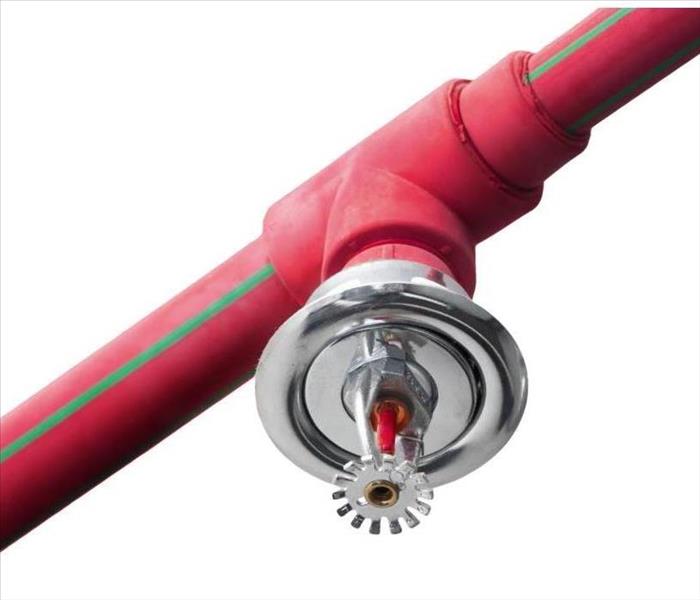 Is your Fenton, MO business protected by a working fire suppression system?
Is your Fenton, MO business protected by a working fire suppression system?
For commercial and residential buildings all around St. Louis, MO, having a working fire sprinkler system installed is the single most effective means of fighting fires. According to National Fire Protection Association (NFPA) statistics, damages to manufacturing facilities, stores, offices, and healthcare facilities with a working fire sprinkler system installed were 60% lower than damages to building with no fire sprinkler system! Make sure your building, employees, customers, assets, and valuables are safe and secure by installing a fire sprinkler system in your office or government building.
Since fire sprinkler systems need to be in working order at all times, they need to be inspected annually to ensure that they will operate properly during a fire emergency. During a fire sprinkler system test, physical checks are performed on all the parts of your fire sprinkler system. These checks include water flow tests, fire pump tests, alarm tests, and trip tests of dry pipe, deluge, and pre-action valves.
In addition to annual fire sprinkler system inspections, you must also carry out quarterly flow tests. Written records of all quarterly fire sprinkler system inspections must be maintained in accordance with NFPA 25.
If properly maintained and inspected, a fire sprinkler system can provide your Fenton, MO building with highly effective fire sprinkler services and fire protection for decades.
Here at SERVPRO of Fenton/South Ballwin, we are here to help 24/7/365 for all your restoration needs!
EPA Compliance Advisory on Product Claims
6/16/2020 (Permalink)
The U.S. EPA recently issued a Compliance Advisory titled “What You Need to Know Regarding Products Making Claims to Kill the Coronavirus Causing COVID-19”. A copy of the Compliance Advisory is included in the attachments on this page. Per the EPA:
The purpose of the Compliance Advisory is to address concerns related to products being used to disinfect surfaces which include claims to kill and/or be effective against SARS-CoV-2, the
coronavirus causing the disease COVID-19. For some of these products, those claims have not been reviewed or accepted by EPA and, therefore, may present a risk to consumers, and healthcare
providers in particular.
The EPA uses the following very strong language that is helpful in advising our clients and
customers regarding the increasing number of new age products and methods that are being pitched with dubious efficacy and other claims in connection with COVID-19, and challenging the use of those questionable products and methods in the marketplace:
It is unlawful for any person to distribute or sell a pesticide in the United States making claims
to that it will kill a particular pathogen, unless that pesticide is registered with EPA and that
particular claim has been deemed acceptable by the agency. EPA is receiving a steady stream of
tips/complaints concerning potentially false or misleading claims, including efficacy claims,
associated with pesticides and devices. These tips/complaints are being actively reviewed and
efforts are being made to identify potentially violative products. EPA intends to pursue
enforcement against products making false and misleading claims regarding coronavirus. EPA is
working with e-commerce platforms to remove/prohibit these fraudulent and/or otherwise inefficacious products from the marketplace. EPA is also coordinating with the U.S. Department of Justice and other federal partners to bring the full force of the law against those selling or otherwise distributing violative products.
SERVPRO of Fenton/South Ballwin consistently uses only SERVPRO approved cleaning and disinfecting products and methodologies to help combat the COVID-19 crisis. We are always there to help! 636-527-5990
Fire Safety Education
5/28/2020 (Permalink)
You may know what to do during a fire, but do your children? SERVPRO of Fenton/South Ballwin has faced countless losses in homes and businesses due to fire damage so we want families to be prepared. It is important to make sure your children are educated on fire safety. You never want to leave your children home alone without the proper fire safety education and since you can't predict a fire emergency, fire safety education is key. Here are some important items to remember:
Make sure that you educate your children on what a smoke alarm looks and sounds like. Make sure they can recognize when a fire alarm has gone off and what to do when an alarm has sound. Know two or more routes to exit your home during a fire as well as a meeting point away from the location a safe distance from the fire. The American Red Cross suggests "Practice your fire escape plan at least twice a year and at different times of the day. Practice waking up to smoke alarms, low crawling, and meeting outside." It is crucial your children also know how to dial 9-1-1.
When making sure your home is up to fire safety standards, make sure to have escape ladders on the upper levels so that you can escape from windows to safety. The American Red Cross also suggests "use quick-release devices on barred windows and doors. Security bars without release devices can trap you in a deadly fire. If you have security bars on your windows, be sure one window in each sleeping room has a release device." It is important to make your children aware of which windows have quick releases on them and how to use them properly. Also have fire extinguishers readily available, and up-to-date and, at minimum, in the kitchen, garage and on the upper levels.
It is never too soon to start teaching your children how to be prepared during an emergency, including fires, as they often occur in the home. SERVPRO of Fenton/South Ballwin is open 24/7 in case a disaster strikes. We are dedicated to helping restore your residence to pre-disaster conditions, making it “Like it never even happened.” 636-527-5990
Certified: SERVPRO Cleaned program
5/26/2020 (Permalink)
Let us help you get back to business
As our communities re-open, we are all moving back toward a new kind of normal. The expectations of visitors, customers, and employees who come into our establishments have evolved, and staying safe and well is a top concern. The global COVID-19 pandemic has changed what it means to be clean, and we have developed a program to help your business meet the new higher standard of clean that is now expected.
Certified: SERVPRO Cleaned is a defensive cleaning program we are offering to businesses and commercial locations to address the current COVID-19 pandemic. This proactive viral pathogen cleaning program goes well beyond janitorial or carpet cleaning. By choosing Certified: SERVPRO Cleaned, you, your employees, your customers, and your community can rest assured that you have selected a higher cleaning standard – you are Certified: SERVPRO Cleaned.
Extensive training and specialized products
As the #1 choice in cleanup and restoration*, we stand on more than 50 years of experience and expertise to help your business become Certified: SERVPRO Cleaned. Beyond fire & water, SERVPRO professionals are trained and experienced in biohazard decontamination and chemical spills – always adhering to the cleaning and decontamination standards set by the Centers for Disease Control and Prevention and local authorities.
From formulating and creating our proprietary cleaning products, like SERVPROXIDE, at our headquarters in Gallatin, TN, to taking the utmost care while disinfecting, we will ensure you and your business are set up to inspire consumer confidence as the economy continues to reopen.
3 C’s – Consult, Clean, and Certify
When the stakes are this high, you want a partner who has developed an industry leading, proprietary training program, cleaning solutions, and remediation processes over decades. We have cleaned up some of the most challenging biohazards imaginable. Certified: SERVPRO Cleaned reflects our unique experiences and capabilities. The program is grounded with our unique 3 C’s: Consult, Clean, and Certify.
- Consult – Every business is different, which is why you will be assigned a Cleaning Protocol Consultant who understands your business and will create a cleaning program to meet your specific needs. This program will be developed based on your business type, size of space, amount of high frequency touchpoints, foot traffic and congestion points.
- Clean – Based on your specific business needs, your location will undergo a thorough, deep clean, using exclusive cleaning products, according to protocols set forth by the CDC. Our employees have years of experience, and we will go beyond the scope of work that regular janitorial staff perform. Cleanup procedures generally include cleaning of porous and non-porous surfaces, disinfecting of non-porous surfaces, cleaning and disinfecting of equipment, tools, and/or supplies used for cleanup process, and disposal of hazardous materials. In the event of a suspected or confirmed COVID-19 event, we will be there cleaning within 24 hours to ensure you get back to business as quickly as possible.
- Certify - Once your business location has been Certified: SERVPRO Cleaned, you will gain access to proprietary signage, digital emblems, and other collateral that communicates that you’ve selected a higher standard of clean available to help protect your employees and customers. And because we add the day, month, and year to that proprietary stamp of clean, your guests will know that not only did you choose Certified: SERVPRO Cleaned, but that your location is being cleaned regularly at this standard.We are Here to Help – 24 hours a day, seven days a week – until life is back to normal in the communities, we all call home.
- Call SERVPRO of Fenton/South Ballwin today at 636-527-5990 for your Certified: SERVPRO Cleaned consultation.
- Call today for a Certified: SERVPRO Cleaned consultation
Air Mover Types
5/7/2020 (Permalink)
Of all the tools used in structural drying, air movers are the greatest in number. Regardless of design, the function of the air mover is quite simple: it is the tool designed to blend the air at the surface of wet materials with other air in the affected structure By doing so, the air mover helps accelerate the rate at which warm air heats surfaces.
Some of the many factors that influence evaporation rates can be influenced or manipulated by the restorer, while others are almost completely out of a restorer’s control. Air movement is one influence on evaporation that we can indeed control. First, however, we must understand air moving equipment and the role air movement plays in the evaporation process.
Air movers are compared in several ways:
- Amp draw: The amount of power the unit uses.
- Volume: measured in cubic feet per minute (CFM)
- Velocity: measured in feet per minute (FPM). Faster airflow translates into more removal of a boundary layer.
- Static pressure: measured in inches of water column. This is needed from an air mover when attempting to force air through ducting or pulling air through resistance.
Types of air movers:
- Carpet dryers (high velocity air movers) are the most common type of air movers.
- Low profile centrifugal air movers provide high velocity air movement from a small-sized unit
- Low pressure axial air movers: specialized air movers used to move large volumes of air with low amp draw.
- High pressure (HP) carpet dryers are specialized carpet dryers, fitted with a high horsepower motor.
- High pressure axial air movers: commonly called ventilation fans, are used to move large volumes of air through ductwork.
- Inter-air drying systems: are used to dry cavities such as under cabinets, wall cavities and under hardwood floors.
We are always here to help!! Call on your professionals at SERVPRO of Fenton/South Ballwin for all your water restoration needs. 636-527-5990
What's Safe to Flush or Drain?
5/7/2020 (Permalink)
What’s Safe to Flush or Drain?
Disposing of the wrong items in a toilet or drain can cause blockages and slow drainage, flooding, and hazardous sewage back-ups into your home or yard. Fixing them can require costly and disruptive repairs for you and contributes to sewer rate increases for the whole community. Don’t let your hard-earned money go down the drain. Follow these guidelines at home and work.
The sewer pipes that serve the toilet, shower, bath, sinks, washing machine, and floor drains in your home or business are designed to carry only three things: human body waste, toilet paper, and wastewater. When other items are put down the drain, they can combine to cause clogs, put additional stress on the pipes, or get caught up in our wastewater treatment facilities. This material then needs to be trucked to a landfill, causing extra work and expense, and higher rates for customers.
Don't Flush or Drain (Just to name a few!)
- Bones
- Bread Dough
- Butter
- Coffee Grounds
- Eggshells
- Gravy
- Paper Towels
- Rubber Bands
- Tampons
- Wet Wipes
DO:
- Place a wastebasket in your bathroom for disposing non-flushable items.
- Place liquid cooking fats, oil and grease into a container with a lid and dispose of in trash.
- Wipe down greasy pots, pans and dishes before washing.
- Have your sewer rodded or snaked regularly.
- Dispose of old medicines or drugs at an approved drug take-back site or event.
- Dispose of motor oil, paint, grease or other dangerous fluids at the St. Louis Household Hazardous Waste collection facility.
If your home or business sustains a backup we are here to help 24/7/365 days!!! Call SERVPRO of Fenton/South Ballwin 636-527-5990
Heat Safety
5/6/2020 (Permalink)
As summer approaches, it is time to consider safety precautions for extreme heat in the coming months. Heat affects all people, but especially the young, elderly, sick and overweight. According to the EPA, "the sun can heat dry, exposed urban surfaces, such as roofs and pavement, to temperatures 50-90 degree hotter than the air, while shaded or moist surfaces-often in more rural surroundings-remain close to air temperatures."
If you must go outside, wear loose-fitting, light-colored clothing, and be sure to apply sunscreen often. Pay attention to signs of heat exhaustion, which are heavy sweating; weakness; cold, pale and clammy skin; nausea or vomiting; and fainting according to the Center for Disease Control and Prevention (CDC). Heat exhaustion can lead to heat stroke, which is life-threatening. Signs of heat stroke are a high body temperature (103+), rapid and strong pulse, and possible unconsciousness. If you think someone has heat stroke, call 911 immediately and move the person somewhere cool.
Extreme heat is a serious danger. For more information on preparation and prevention, visit ready.gov or cdc.gov.
Role of Air Movement for Evaporation
5/6/2020 (Permalink)
Two aspects of air movement influence evaporation of moisture from materials.
- Velocity- The speed of the air moving across surfaces.
- Volume- The quantity or amount of air moving during a period of time.
Velocity is a multiplier in the evaporation process, multiplying the rate that evaporation occurs. The velocity of airflow is comparable to wind speed. Higher wind speed will result in higher evaporation rates. Likewise, the faster the velocity of air moving over a wet surface, the better the rate of evaporation will be. Velocity is measured in feet per second (FPS), feet per minute (FPM), or miles per hour (MPH), and can be determined using an anemometer.
Volume is critical to the circulation of air. Airflow used for drying must have high wind speed, but that wind must be dry air. The source of dry air usually is a mechanical dehumidifier, though it could be the outdoor environment. Regardless of source, the dry air must be distributed or circulated throughout the affected area, much like the heated or cooled air from a home air handling system must be distributed throughout.
Moving air from one location to another is a product of mass, or volume, and is usually expressed in Cubic feet per Minute (CFM). We measure air movers in terms of CFM to indicate how much air the air mover is able to move around.
Restorers can better control air movement when they understand the roles of air volume and air velocity. Volume is not velocity. Adequate velocity is critical for increasing the rate of evaporation. Adequate volume is important when trying to circulate wet, dry air throughout especially large and complex structures.
SERVPRO of Fenton/South Ballwin professionals are here to help with all your drying needs.
The Science of Drying
5/5/2020 (Permalink)
Did you know there is a science behind the process of drying? Having the knowledge of psychrometrics is essential to restoring a water-damaged structure to its preloss condition. While your initial reaction may be to grab a few towels to mop up the mess and place a fan or two around the damaged area, SERVPRO of Fenton/South BallwinFranchise Professionals are trained in the science of drying and follow strict industry-approved standards to help lower the chances of any secondary damages. If your business suffers a water damage, SERVPRO Franchise Professionals will:
- Inspect the building to detect every component that is wet to help prevent secondary damage from happening.
- Measure how much moisture is in wet materials and monitor whether the materials are drying properly.
- Speed up Mother Nature by using professional drying equipment.
What exactly does it mean to help "Speed up Mother Nature"? A wet building can often dry naturally because the environment always seeks equilibrium. When materials are wet, moisture will naturally move to drier air at the surface of the material - but only if the air is, indeed, drier.
The only problem is nature often takes too long and secondary damages may occur while the building is drying out.
Your SERVPRO professionals have the tools and equipment to help Mother Nature along, including equipment to help dry hardwood floors, tough-to-reach spaces inside walls, and much more.
It's not only the equipment, but the technology too. SERVPRO had developed DryBook, a proprietary tool that provides real-time documentation and updates on the drying process and helps ensure industry drying requirements are met. With DryBook Mobile, you can know exactly where your property is in the drying process.
Bottom line, SERVPRO of Fenton/South Ballwin Franchise Professionals have the training and equipment to help make water damage "Like it never even happened."
We are always here to help! 636-527-5990
Biohazard, Crime Scene, and Vandalism Cleanup
4/30/2020 (Permalink)
Recognized as a leading fire and water cleanup and restoration provider by hundreds of insurance companies, SERVPRO of Overland/Cool Valley's professionals also offer fast, reliable biohazard and crime scene cleanup services to residential and commercial property owners.
Exposure to biological and chemical contaminants can pose serious health consequences for building occupants, employees, customers, and owners. A failure to properly handle and safely remove such hazardous substances can contribute to unhealthy and even dangerous environments.
We are trained so safely and effectively remove biohazardous substances and prepare waste for proper disposal according to OSHA, EPA, and state and local health regulations.
We can help with the following issues:
- Bloodborne Pathogens
- Methamphetamine Labs
- Crime Scene Residues
- Arson
- Vandalism
- Sewage Backups
- Black Water Intrusions
- Mold Mitigation and Remediation
We are available 24 hours a day to help with any situation that may arise! 636-527-5990
Managing Mold
4/30/2020 (Permalink)
When there is a water intrusion, like a roof leak or leaking water line, mold can quickly become a problem in your home or business. Mold can cause health effects and can also cause significant damage to your property. Fortunately, here at SERPVRO of Fenton/South Ballwin, we have the training, protective gear, and specialized equipment necessary to handle your mold problem. Although every mold damage scenario is different requiring a unique solution, the general mold remediation process stays the same.
- Call the team at SERVPRO of Fenton/South Ballwin
- Your property will be carefully inspected for signs of mold using technology designed to detect to detect mold and hidden water sources.
- Various containment procedures will be placed to prevent the spread of mold and isolate the contaminated area with physical barriers and negative air pressure to keep the mold spores from spreading during the cleanup process.
- Specialized filtration equipment captures microscopic mold spores out of the air.
- The mold remediation process depends on the amount of mold growth and the types of surfaces on which the mold appears. Removing and disposing of mold-infested porous materials, like drywall and flooring, may be necessary.
- A variety of cleaning techniques will be used to clean and sanitize your belongings.
SERVPRO of Fenton/South Ballwin understands mold and mold growth and have the training and equipment to remediate mold in your home or business, so give us a call! 636-527-5990
National Building Safety Month
4/30/2020 (Permalink)
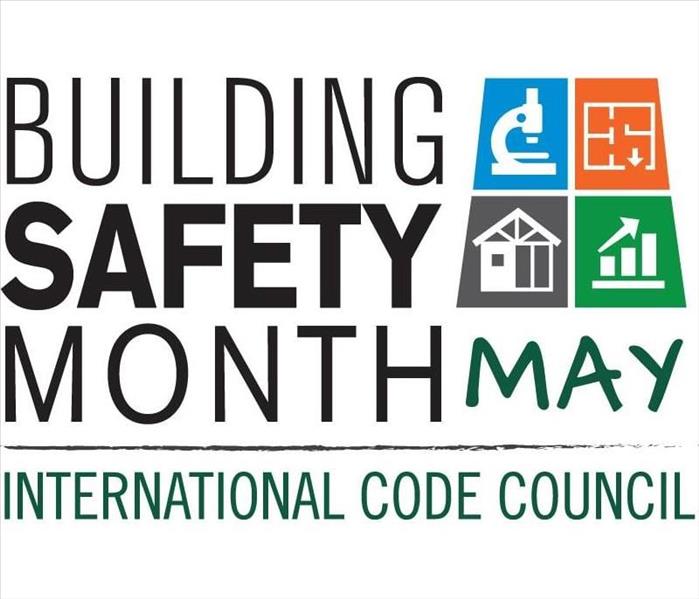 Making sure communities are prepared for natural and manmade disasters.
Making sure communities are prepared for natural and manmade disasters.
Why is Building Safety Month important today?
For the last 40 years, the Cod Council, its 64,000 members, and a diverse partnership of professionals from the building construction, design and safety communities have come together to celebrate Building Safety Month.
Building Safety Month provides education for the public about solutions that improve the safety, sustainability and resiliency of buildings, infrastructure and communities. Properly administered and up-to-date safety codes reduce loss of life and property damage.
WEEK ONE - Disaster Preparedness
WEEK TWO- Water Safety
WEEK THREE- Resiliency, Sustainability, Innovation
WEEK FOUR- Training the Next Generation
Call us today to set up an appointment to establish your Emergency READY Profile
Prepare now for Spring Floods
4/28/2020 (Permalink)
– According to the National Weather Service, there is the potential for Missouri to experience serious flooding again in only a few weeks. Last year’s damage repairs are ongoing, while emergency managers, meteorologists, engineers, farmers, and residents monitor weather forecasts, anticipating another spring flood season.
FEMA’s National Flood Insurance Program (NFIP) is a great way to protect your home, business, or personal property. According to NFIP, just six inches of water can cause $52,000 in damage to your home. Statewide, NFIP paid more than $70 million in flood insurance claims to Missouri policyholders for damage in 2019.
After 2019’s historic flooding, one action residents and business owners should take immediately is to review their current flood insurance coverage or consider purchasing a flood insurance policy if they don’t have one. Did you know most homeowner and business multi-peril policies do NOT cover flood damage? A new policy takes 30 days to go into effect. Other key facts you should know:
- Flood insurance can pay up to $250,000 for damage to your house and up to $100,000 for contents.
- Business owners can purchase coverage up to $500,000 for structures and up to $500,000 for contents.
- Flood insurance pays for covered flood damage regardless of whether there is a federal disaster declaration. The average annual cost of an NFIP policy for homeowners is about $700.
- Anyone can buy flood insurance if your community participates in the National Flood Insurance Program (NFIP), no matter where your home or business is located. Check with your local officials to find out if your community participates.
- Almost 25 percent of flood insurance claims come from areas not considered at high risk for flooding. Individuals and business owners are encouraged to look over their own emergency plans and update as necessary to ensure they are sufficiently prepared. Ask these crucial questions:
Remember, once you purchase a policy, it takes 30 days for the coverage to go into effect. Anywhere it rains, it can flood. Before the rivers rise, have your policy in place.
- If you already have a policy – is your coverage amount adequate?
- Do you have BOTH structure and contents policies? These are separate coverage policies and amounts. Ask your insurance agent.
- Do you rent? You can buy coverage for your personal property. Ask your agent about renter’s flood insurance.
- Current soil saturation is above average for this time of year. Snowmelt runoff from the Rocky Mountains and ice jams on northern rivers all contribute to the amount and force of water flowing through the Missouri and Mississippi river systems. After two consecutive years of heavy moisture, flooding is a significant part of the 2020 spring outlook. Consider the flood risk and act now to protect yourself, your family, your business, or your property.
If your home or business is affected by spring flooding call SERVPRO of Fenton/South Ballwin. We are always here to help.
IICRC Firm
4/22/2020 (Permalink)
SERVPRO of Fenton/South Ballwin is an IICRC firm. The Institute of Inspection, Cleaning and Restoration Certification (IICRC) creates the standards for the restoration industry and provides training and certification to restoration companies. IICRC Certified Firms have the right to display the IICRC Certified Logo.
IICRC Certified Firms must
- Present accurate information to consumers and conduct business with honesty and integrity.
- Require a technician on all jobs who has been formally trained and passed all required tests.
- Require a continuing education program to keep technicians up to date on the latest changes in the industry.
- Maintain liability insurance to protect all parties in the event of an accident.
- Maintain a written complaint policy and agree to Better Business Bureau or similar arbitration to resolve disputes and accept the conclusions and recommendations of arbitration.
The IICRC Develops the Standards for the Restoration Industry
The IICRC has been the driving force in establishing the main industry standards and reference guides for professional carpet cleaning, water damage restoration and mold remediation. These IICRC standards take years to develop and require the coordination of experts in the field: manufacturers, industry organizations, insurance professionals, training schools, contractors, and public health professionals.
Every five years, the standards are reviewed and updated. The water damage restoration field changes rapidly with advancements in technology and science, and therefore the standards must evolve to keep pace.
About SERVPRO of Fenton/South Ballwin
SERVPRO of Fenton/South Ballwin specializes in the cleanup and restoration of residential and commercial property after a fire, smoke, or water damage event. Our staff is highly trained in property damage restoration and we are an IICRC Certified Firm. We believe in continuous training: from initial and ongoing training at SERVPRO’s corporate training facility to regular IICRC-industry certification, rest assured our staff is equipped with the knowledge to restore your property.
SERVPRO Services
4/16/2020 (Permalink)
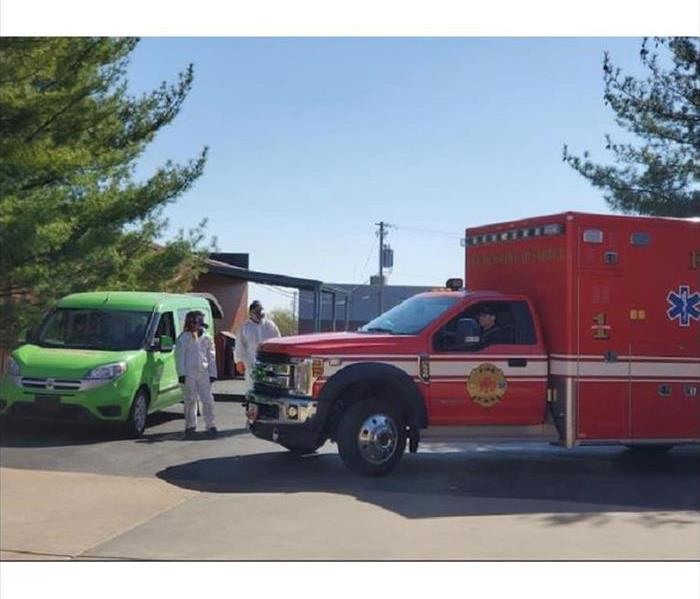 Local Firehouse
Local Firehouse
One of SERVPRO’s spectacular services is coming to the forefront during this crazy time we’re living in. SERVPRO has a plethora of options for commercial cleaning which include carpet cleaning, duct cleaning, general cleaning and bioremediation. During the outbreak of this Coronavirus pandemic, the bioremediation piece is more important than ever. Non-essential businesses have been shut down, and essential ones are at risk for business interruption. SERVPRO is here to help put a stop to this. SERVPRO Franchises are performing disinfecting services for this awful virus. SERVPRO is doing their part to keep businesses running and using their disinfecting services for the good of the community. Several franchises have been disinfecting our First Responders’ vehicles free of charge. SERVPRO follows the CDC’s guidelines on all of these cleans and only uses EPA registered disinfectants to get the job done. This proves that your local SERVPRO Franchise will get the job done right and get it done safely. Contact SERVPRO of Fenton/South Ballwin for any of your commercial cleaning needs. Whether that be disinfecting to keep you in business or just a carpet clean to keep your business looking fresh. Call (636) 527-5990
Emergency Ready Profile (ERP)
4/16/2020 (Permalink)
SERVPRO offers a lifeline to all businesses, The Emergency Ready Profile (ERP). ERPs are a profile set up by SERVPRO Professionals to aid in putting a halt to business interruption, and to get businesses back in working order quickly. The Emergency Ready Profile is presented to the businesses’ responsible party in a paper copy form. The profile is put together in a folder with all the pertinent information in one place, ready to use in a moment’s notice. The ERP contains vital information to the business, as well as the SERVPRO Franchise. It is set up with a property overview, building access details, utility contacts and shut off locations, emergency/key contacts and a multitude of pictures and notes. Another reason ERPs are so great is because a SERVPRO Professional will put the profile together for your business free of charge. Contact your local SERVPRO Franchise and have them come out to set up an Emergency Ready Profile for your commercial property. It will alleviate the stress of a prolonged business stoppage and get your business up and running before you know it. Call SERVPRO of Fenton/South Ballwin (636)527-5990 for all you restoration needs.
Fire Safety
4/16/2020 (Permalink)
Fires can be the most devastating acts of nature or unpredictable accidents, but several types of fires can be avoidable. Fires within our homes and businesses can be reduced simply by following a few safety practices.
Some friendly fire reminders include keeping matches and lighters out of reach, smoking outside, and watching your cooking. It is important to stay in the kitchen when you are grilling, frying, or broiling food. It is also important to be careful when using candles, remember to inspect your electrical cords, and to give space heaters space. It is recommended to keep space heaters at least three feet from anything that can burn. Finally, protect and prepare yourself, your family, and your colleagues!
Depending on the building structure you should install smoke alarms and sprinklers. It is important that both smoke alarms and sprinkler systems be tested or checked on a regular basis!
Rather these tips help or not, having a fire escape plan is the most important safety practice. Plan, know where you are going if a fire should occur, practice your procedure with your family/coworkers, and talk about it often. Bottom line…. Stay safe and remember that SERVPRO of Fenton/South Ballwin is here to help! (636)527-5990
Tornadoes.....Safety and SERVPRO Tips
4/16/2020 (Permalink)
To be ready for the potential danger a tornado brings may seem impossible, but just like all storms…. the key to survival is being prepared! Tornadoes are a bit more popular in the southern states we refer to as “Tornado Alley” and I am sure most of us reading this have never witnessed the destruction and loss of life a tornado can cause. This still doesn’t mean that we ignore or ill prepare our homes and places of business. Here at SERVPRO we have a few tips!
For starters, you need to put together a Safety Kit. This kit should include everything from three days of drinking water, food (nonperishable), basic first-aid supplies, a battery powered radio, and flashlight supplies. Please Be Aware of your weather warning system, both where your home and place of business reside. It is important to know which days are drills, your designated safety location to relocate, and to stay updated on any changes. Then when or if the situation occurs Do Not Open Your Windows. In no way does opening a window save on the impact or damage a tornado will bring. This only gives debris and rainwater easy access to enter and damage the building. Finally, If You Are In An Automobile it is important to get to the nearest building and the lowest level possible. Find a safe location, possibly under a solid piece of furniture like a desk or under a basement staircase.
To explore the option of having a more detailed emergency plan contact SERVPRO of Fenton/South Ballwin (636)527-5990. We are here to help and can aid in the production of creating an Emergency Response Profile for your home or business!
Faster to Any Size Disaster
4/7/2020 (Permalink)
SERVPRO is Faster to Any Size Disaster
Here at SERVPRO, we have a strict set of response guidelines that make us “Faster to Any Size Disaster”. These guidelines are known as the 1-4-8 rule. 1: The one in 1-4-8 means that a SERVPRO Franchise Professional will contact you to arrange services within one hour of receiving the loss notice. 4: The four stands for the time it will take to have a SERVPRO Professional at your home or place of business. After receiving the initial loss notification, SERVPRO will have one of their qualified professionals on-site within four hours to begin services. 8: Lastly, the eight in 1-4-8 pertains to a SERVPRO Professional providing a scope of work to the responsible party for the loss. Because of SERVPRO’s 1-4-8 rule, the company makes a promise that they will be there for its customers in a time of need, and in a timely manner. This allows your home or company to be back to working condition in the most efficient amount of time. The 1-4-8 guideline is an important aspect of what makes SERVPRO “Faster to Any Size Disaster”. #SERVPROFENTONSOUTHBALLWIN
Protein Fires
1/17/2020 (Permalink)
Protein fires result in smoke damage from the burning of any protein enriched fibres, most commonly due to neglectful cooking. Unlike any other structure fire where there is lots of visible smoke from fast-burning materials, the low temperature of cooking food (in comparison to the high temperature of structure fires) reduces the animal fat and protein to a fine mist. This specific type of fire does not appear to produce much smoke or cause significant visible damage to your property, but the ‘mist’ it produces will cover your entire home or business in an invisible, sticky, foul smelling residue. This residue can penetrate your range hood, cabinets, ducts, closets, textiles, ceiling tiles, insulation, the paint on your walls, and any other porous surface in your home or business.
The techniques necessary for restoring your home and belongings after a protein fire are unique and require special expertise that only professionally trained technicians are knowledgeable about. Everyday household cleaners will not remove the residue – this includes anything from floor cleaners and bleach to dish soap and laundry detergent. Every inch of your home and every piece of contents that is affected needs to be treated with specialized products.
SERVPRO of Fenton/South Ballwin uses specialized products and application techniques that will be implemented in stages to ensure the pores and fibers throughout your home or business are thoroughly cleaned. This process is spread over multiple days. One application of one product may be enough to restore a bathroom cabinet down the hall from your kitchen, but the cabinets directly above your stove may require removal or several applications of two or three different products for more intensive odor control. It all depends on the type of food that was burnt, how long it burned for, the temperature it burned at, and the layout and type of materials in your home or business.
If you experience a protein fire, your best chance at fully restoring your home or business is a call to SERVPRO of Fenton/South Ballwin. We are always here to help!!!
How to Beat the Freeze
1/12/2020 (Permalink)
Once the temperature starts dropping outside, you should take measures inside to keep your pipes warm and water running. Research conducted by the Building Research Council at the University of Illinois shows that the “temperature alert threshold” is 20° F, especially if you have uninsulated pipes running through an uninsulated space.
Some of the steps experts recommend may go against your better instincts of conserving water and heat, but the extra expense is nothing compared with a hefty repair bill. Here’s what to do:
Keep garage doors closed, especially if there are water supply lines in the garage.
Open kitchen and bathroom cabinet doors to allow warmer air to circulate around the plumbing, especially if your sinks are on an exterior wall. (If you have small children, be sure to remove any harmful cleaners and household chemicals.)
Let the cold water drip from a faucet served by exposed pipes. Running water through the pipe—even at a trickle—helps prevent pipes from freezing.
Keep the thermostat set to the same temperature during day and night. Again, during a cold snap is not the time to set back the thermostat at night to save a few bucks on your heating bill.
If you plan to be away during cold weather, leave the heat on in your home, set to a temperature no lower than 55° F.
For the long term, add insulation to attics, basements, and crawl spaces. Insulation will maintain higher temperatures in those areas. And to prevent drafts, seal cracks and openings around windows, doors, and at sill plates, where the house rests on its foundation. SERVPRO of Fenton/South Ballwin is available 24/7/365 to assist if you have damage due to frozen pipes.
How to protect your home from Flooding
10/28/2019 (Permalink)
When protecting your home from flood damage, assess the risk flooding poses in your region and your house specifically. You should then try to carry out a range of preparations and renovations, such as applying a sealant to any foundation cracks and checking with your insurance company to determine if any addition coverage for flooding is available.
The first step to flood protection is to determine how likely you are to suffer a flood in your area, and how well your house is built to withstand it. The FEMA Flood Map Service will show you the general flood risk of your region. After you enter your zip code, click "View web map," to see your area's flood zones, and click "show all products for this area," to see reports of your region's flood history.
Here are some areas to improve the flood protection of your home:
- Install foundation vents, or a sump pump
- Check with your insurance agent for additional coverage
- Repair any foundation leaks or cracks
- Raise your electrical outlets and switches
- Grade your lawn away from the house
- Make sure gutters are clear and direct water away from the house
For any additional questions on how to protect your home or business from flooding call us at (314) 858-1688
Removing Moisture from Materials
9/9/2019 (Permalink)
The rate at which moisture moves through materials depends upon two primary factors: the type of material affected and the degree of wetness. The type of material affected will vary in permeability (ability for water to pass through the material), hygroscopicity (ability to absorb water), thickness, density, temperature and "R" factor (resistance to heat transfer).
Each of these characteristics will influence the way in which water travel through the material. The degree of wetness will influence the moisture movement, in combination with other material characteristics, by indicating the type of water being addressed. Water will be present in one, two or three forms:
- Surface Water
- Free Water
- Bound Water
Surface water is readily available at the surface of a material. It is liquid, visible and will evaporate readily. All materials are capable of supporting surface water. Surface water is best removed physically using mechanical extraction equipment or other physical means. Minute amounts of remaining surface water are readily evaporated using large amounts of airflow and moderate temperature and humidity.
Free water is present within a material but is not bonded. It exists in cavities, open pores and other air spaces within the material. It is liquid, generally visible by a darkening of the material (e.g., wood) and can evaporate readily. Most materials are capable of supporting (containing) free water. Materials not capable of retaining measurable amounts of free water are non-permeable, non-porous materials such as vinyl, vinyl composite, steel, rubber and some other solid, synthetic materials.
Bound water is absorbed by the material and held captive by chemical bonds. It is similar to vapor in that it is not fluid, yet similar to a solid/liquid in that it is bonded to other molecules. Because it is bound to other molecules, it must first be freed before it can be removed.
Respiratory Protection from Mold
8/26/2019 (Permalink)
The human body can be exposed to contamination in three ways: by dermal (skin contact), inhalation (respiratory) and ingestion (consumed). The most common way of providing protection is the use of personal protection equipment. One such piece of equipment is a respirator. Respirators come in a variety of styles, with different levels of protection, and are rated according to their protection factor.
Before using a respirator, all of our technicians will receive effective training on respirator usage. According to OSHA's "General Duty Clause," an employer is required to provide a safe work place for employees. Thus any company doing microbial remediation would have to provide a respirator-training program that would include medical evaluations. In this training our technicians are trained how to put on and take of a respirator, how to care for their respirator, what a respirator will and will not protect against. There are additional requirements for wearing a respirator that include a medical evaluation of the technician's lung capacity and a fit test to assure protection.
For microbial remediation work that is performed by technicians, the cartridge almost always used is a HEPA filter. A HEPA (High Efficiency Particulate Air) fliter removes 99.97% of particulates down to 0.3 micrometers. With this level of protection, virtually 100% of mold spores will be filtered out and not enter the lungs.
Two Drying Methods
8/19/2019 (Permalink)
After making the decision of whether or not to dry a material, Project managers begin evaluating how to begin the restoration work. Many methods are available - each applying a different combination of humidity control, temperature, airflow and physical manipulation of the material (e.g., injection of airflow, perforation, removing finish materials).
Our Project Managers use the information obtained during evaluation of materials to help select the best drying method for the job. Generally there are two primary methods to promote drying of affected structures: 1) disruptive methods and 2) aggressive methods.
Disruptive Drying Methods
Disruptive drying methods involve removing wet items, injecting air to speed drying, or perforating surfaces to allow water to evaporate. The term disruptive is used because repairs will have to be done after the structure has been dried. Use disruptive methods when contamination, damage, cost or customer concerns require removal or manipulation of the affected material.
Aggressive Drying Methods
Aggressive or "in-place" drying methods involve leaving wet items in the structure and drying them in-place using warm, dry direct airflow. Aggressive methods are used when contamination and damage are not concerns, and when it is cost effective to dry an item instead of replacing it.
Project Managers will use aggressive drying methods when all of the following are true:
- The water intrusion came from a sanitary source (Category 1).
- Drying carpet and underlay (pad, cushion) in place will not cause structural damage to subfloor (especially hardwood).
- Adequate dehumidification is available and usable on site.
- Deep extraction tools are available.
The success of each decision made during the restorative drying process depends on the information upon which the decision was based. A skilled technician with quality meters will make the proper decision at each phase of the project.
HVAC Systems: Affected by a Fire
7/15/2019 (Permalink)
HVAC systems condition the air within occupied interior spaces. They ventilate and supply warm or cool air through an air conveyance systems referred to as ductwork. HVAC systems typically have a cold side, or return air, and a hot side, the supply air. An air filter system is normally strategically located on the return side, somewhere before the blower motor compartment. Most air filters are engineered to capture smaller airborne contaminants in order to protect the blower compartment components.
Although HVAC systems all have the same purpose, they vary greatly in design. Soot and smoke odor removal is relatively easy in some types, especially metal ducts. However, following a structural fire, soot contaminates coat most interior fiberglass surfaces. Fiberglass duct insulation is easily contaminated due to the volume of air spaces within the insulation matting. When ducting becomes exposed to smoke odor gases and particulates, PICs penetrate deep within the fiberglass fibers used to insulate the ducting. An HVAC system that was operating during a fire will certainly be more heavily contaminated than one that was turned off; however, systems become contaminated even when they were not operating during the fire.
An inspection of the HVAC system will determine when the complete system requires cleaning. In heavy soot contamination situations, restorable mechanical components within the HVAC system should be disassembled, cleaned and deodorized in accordance with published NADCA standards. NADCA stand for National Air Duct Cleaners Association.
What is Microbial Contamination?
6/3/2019 (Permalink)
What is Microbial Contamination? Where does mold come from? Is microbial contamination a health concern issue? How do you properly get rid of a microbial contamination?
Microbial contamination refers to a variety of microorganisms, including mold, bacteria, viruses and protozoa; and fungi, which includes molds, yeasts, and their by products and toxins. All of these can affect the health of a building and its occupants.
As a starting point the proper job sequencing for a typical microbial-remediation project includes but it not limited to: identifying and stopping the source of moisture; setting up containment; establishing negative air; removing contaminated building materials; cleaning surfaces; drying the affected areas; conducting a post remediation evaluation.
Mold spores are a major concern for our project managers. Because of their very small size, mold spores can be anywhere there is air, including under carpet, inside wall cavities, under kitchen cabinets, virtually everywhere. Molds are usually not a problem unless mold spores land on a damp spot and begin growing. They digest whatever organic material they grow on in order to survive. Some molds grow on wood, paper, carpet, foods and insulation, while other molds feast on the everyday dust and dirt that gather in the moist regions of a building. Generally mold spores are hydrophobic. This means that spores do not like water itself. While mold spores need water to colonize (germinate and grow), they like wet organic substances, not a puddle of standing water.
Hazard Awareness and Risk Assessment
5/27/2019 (Permalink)
The first line of defense against safety hazards is awareness. A hazard inspection checks for any work-site situation that potentially poses danger to life or property. Project managers must then perform a risk assessment on all potential hazards found on the work site. The assessment evaluates the risk or likelihood a particular hazard will cause harm. Due to the unsafe nature of most water damaged structures, hazard inspections and risk assessments are essential for protecting workers.
The initial hazard inspection and risk assessment of a water damaged facility would involve three important aspects. The first step is to identify hazards that could give reason not to enter the building, such as wet electrical panels and collapsing ceilings. The second step is to identify the presence of regulated building materials such as asbestos, lead or PCB's (polychlorinated biphenyls). Government-regulated substances may require testing or inspection services from specialized. Third-party experts to assess health and safety issues. Finally, a competent technician conducts a risk assessment and installs or implements the necessary hazard controls for any identified hazards.
Installation of Air Movers
5/20/2019 (Permalink)
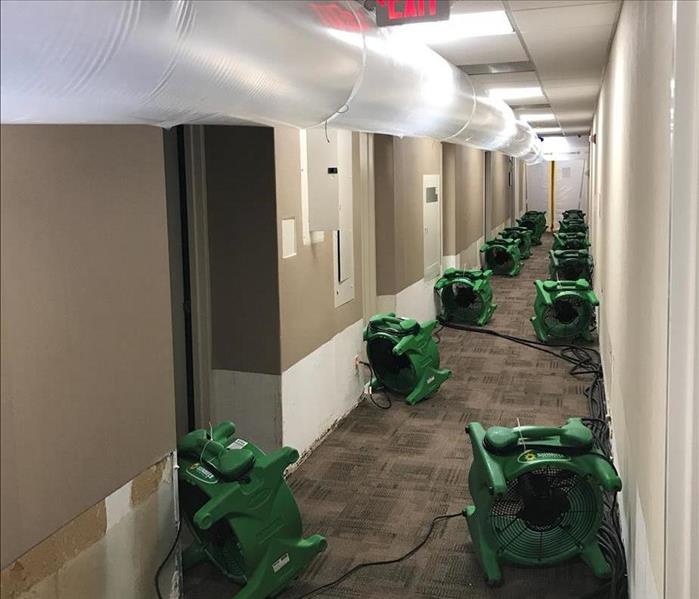 Air movers specifically distributed to ensure proper distribution of air.
Air movers specifically distributed to ensure proper distribution of air.
Air movers are placed in the environment to ensure rapid evaporation across all affected surfaces. The number of air movers necessary depends upon the number of wet surfaces, the amount of water present, and the ability for air to reach each wet material (e.g., wall cavities, behind cabinets, and under contents).
The IICRC S500 Standard recommends that air mover installation quantities should be based on the amount of wet surface area in affected spaces. For the initial phases of drying, air movers should produce continuous airflow across affected material surfaces. A step-by-step process for determining the proper number of air movers is:
- Place one air mover for each affected area.
- Add one air mover for every 50 to 70 sqft. of affected floor area.
- Add one air mover for every 100 to 150 sqft. of affected wall surfaces (above 2') and ceiling surfaces.
- Add one air mover for every room offset or inset greater than 18 inches.
This calculation should provide an appropriate amount of air movement for most water intrusions, but can vary depending of the situation and type of materials affected.
Once the number of air movers to be installed has been determined, several factors will influence their actual placement. These factors include: the type of material affected, the degree of saturation, the accessibility of the actual wet surface, power availability and equipment availability. Below are some general guidelines for installation of air movers:
- Air movers are directed toward the wall at a 5 to 45 degree angle, depending on the type of air mover.
- The air mover's snout will almost touch the wall, within in 1 to 2 inches.
- All air movers in each area will face the same direction to ensure that air movers are not pushing against each other.
- When placing air movers, we need to consider the need for circulation throughout the affected area.
- Specialty air movers may be necessary if building cavities require air flow.
Water Damage following a Fire
5/20/2019 (Permalink)
After a secure building by properly completing a board-up, water removal and drying wet surfaces is the next step. Due to the presence of water, fire restoration and water restorations are related. All of the primary and secondary challenges associated with water restoration can be found in a fire restoration project. Examples are degradation of structural components, contents, corrosion of metallic surfaces and microbial growth. An added complication is that waterborne smoke odor may penetrate deeply into porous materials.
In locations where water has been used to extinguish the fire, the water will migrate through the structures and wet building materials. During this process, the water becomes contaminated with innumerable materials. Excess standing water should be extracted thoroughly. Some buildings are so full of water that special pumps are required to remove standing water. Where possible, wet surfaces should be treated with a broad spectrum, government-registered disinfectant to control the growth of microorganisms. All personnel should followed label instructions when using EPA-registered products.
Dehumidification is set-up within the water damaged area(s) depending upon power availability and the type of drying equipment available. A supplemental electrical power source may be necessary in some buildings.
What is lurking in flood waters?
4/11/2019 (Permalink)
 Flood Waters
Flood Waters
Underneath the surface of flood waters can be an abundance of danger: both living and non-living. The Environmental Protection Agency requests that everyone limit their exposure to flood waters. The agency states that flood waters may have high levels of raw sewage from both humans and animals embedded in the waters. In addition to that, many plants, factories, and farms may be overrun with flood waters, and some of those can leak toxic materials into the water, such as an oil refinery or nuclear plant. These issues can affect water mains, well water, and lines that can bring contaminated water into dry homes that may not even be flooded.
Unwanted animals may be lurking underneath the waters as well: crocodiles, snakes, fire ants, and even, if you're along a coastline, sharks.
On top of that, mold and standing water can both lead to unwanted visitors inside your home. Mosquitoes and insects tend to live, breed, and thrive in standing water, and mold growth can spike in the event of moisture. Getting rid of standing water near your home, in gutters, old tires, plastic covers tarps, pools, and buckets can certainly help.
While we can't totally alleviate the effects of flooding during severe weather, developing a flood plan for your family can help out.
Create a barrier of protection for areas that can be inundated with floodwaters, by way of perhaps sandbags. Additionally, secure food and water for your family in the event that clean, drinking water is scarce.
Officials urge storing in a cool place, at least 3 days of water for each individual person. Do not use or drink contaminated water for anything: brushing your teeth, washing dishes, making ice, or preparing food.
After the Storm, keep older and younger people with sensitive immune systems out of the home until your home or business can be restored by SERVPRO of Fenton/South Ballwin. We are here to help 24/7/365. 314-858-1688
Corrosion Control
4/11/2019 (Permalink)
Mitigation services help prevent additional damages. Loss mitigation services include winterization to prevent freezing, controlling corrosion, and cleaning surfaces to prevent staining.
As soot combines with atmospheric water vapor, it becomes acidic. Neutralization of acid smoke residue is a fundamental part of the initial stages of corrosion prevention. In most cases, alkaline solutions are used to help remove and neutralize the acid smoke residue.
After removing the smoke residue from metallic and plastic laminate surfaces, apply an oil-based coating (Many restoration professionals use a common lubricant like WD-40). This treatment will slow down and/or inhibit corrosion and discoloration by airborne smoke particles that remain after the Project Manger completes the emergency service visit. This simple, but often overlooked, step can help to reduce overall replacement costs.
Initial Emergency Smoke Odor Reduction
4/11/2019 (Permalink)
Removing smoke odor contamination is always the first step in effective, permanent odor control. Next to establishing safe working conditions, prevention or reduction of smoke odor penetration should always be among the first orders of business when arriving to a fire-damaged structure. Odors are likely to be pronounced when you first arrive. This is because odors are most apparent when humidity and temperature are elevated - typical condition immediately after a fire has been extinguished.
Whenever possible, charred, unsalvageable materials should be removed at the outset of a restoration job to help eliminate odors and additional soiling. In most smoke odor situations, the best overall system for removal of intense smoke odors requires a combination of techniques and procedures.
Call us today for additional tips on reducing smoke odor following a fire in your home or business!
Board-Up: Securing your home or business
4/11/2019 (Permalink)
If doors or windows have been damaged or destroyed in a fire, rain and wind may enter the building and cause further damage. Also, curious onlookers or vandals may attempt to enter a damaged building. To help prevent these problems, it may be necessary to "board-up" the property.
The board-up procedures should provide durable protection for the damaged structure and cause minimal additional damage to building surfaces. Board-up methods include:
- Cover-over
- Fitted inserts
- Bolt tension
- Tarps and shrink wrap systems
The cover-over system is easy to install and probably most applicable on roofs. Large expanses of roof can be covered quickly with heavy-duty tarps. Fitted insert board-ups are more difficult to install but are more weather tight than the cover-over system.
Bolt tension methods are relatively easy to install and have the advantage of being weather resistant and difficult for intruders to disengage. Placing carpet or carpet pad on the interior brace will prevent additional damage to wall surfaces.
What to expect from the Initial Water Damage Inspection?
4/3/2019 (Permalink)
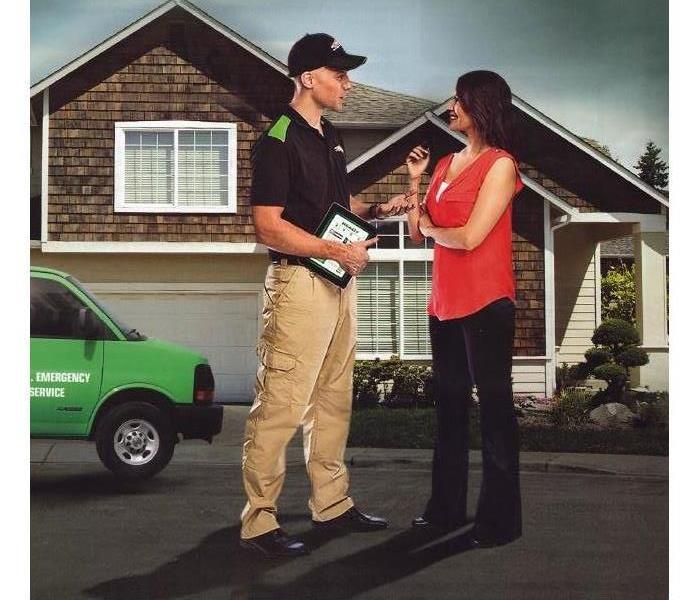 Initial Inspection
Initial Inspection
What to expect from the Initial Water damage inspection
The goal of the restoration process is to transform an abnormally wet, potentially damaged structure into an environment of equal or better appearance and cleanliness than before the intrusion occurred, and to do so in the most economical and efficient means possible.
Our Loss Professionals begin this process by identifying all affected materials. Water must be tracked from its source and followed in every direction to establish an accurate perimeter of the flooded area. Next, our Loss Professional documents what types of materials have been affected (e.g., type of subflooring, type of carpet and underlay, type of wall construction, and type of insulation.) Affected materials are then evaluated against three criteria to determine if they should be restored or replaced.
The 3 Criteria are:
- Degree of Contamination
- Damage to the item
- Replacement cost vs. Restoration cost
Only after identifying the material and considering these three factors does the Loss Professional decide which materials should be dried and which should be replaced. In addition, the Loss Professional will also decide which materials should be dried aggressively and which should be dried through more disruptive means.
Protecting your Carpet
4/2/2019 (Permalink)
 Carpet Delamination
Carpet Delamination
Once the water migration edge is located, it is important to protect furniture from contact with wet carpet. Simple foam furniture blocks, foil, or plastic tabs accomplish this task. Blocking furniture accomplishes several important goals, including:
- the prevention of color transfer between furniture and carpet (which causes staining)
- the prevention of rust stains
- the facilitating of effective and efficient drying by elevating furniture (especially low or heavy furniture such as bookcases)
In some restoration projects it is necessary to remove the carpet pad. This process will require the Project Manager to disengage stretched-in carpeting. Because carpet loses 80%-85% of its strength when it is wet, it is vital to treat carpet as gentle as possible until it dries.
Whenever carpet must be disengaged from the tack strip, a knee kicker and carpet awl must be used. The knee kicker is used to release the tension on the carpet and move it away from the tack strip. Then, the carpet awl is pierced through the carpet's primary and secondary backing and used to lift it up and away from the tack strip. This method of disengagement effectively reduces the possibility of delamination.
Carpet is disengaged around the perimeter of the room, then rolled back in one direction to expose the pad beneath. The majority of pad has a skin or mesh on the top side. The purpose of this skin is to ease carpet stretching during installation.
Essential Elements for In-Place Drying
4/2/2019 (Permalink)
High value structural materials and contents that have slight reversible damage are dried aggressively. This procedure is referred to as drying in place. Drying in place means that the wet surfaces are dried with little or no manipulation.
Deep extraction tools combine three important elements that contribute to effective water removal: speed control, a vacuum seal and weighted compression.
- Mechanical speed control is essential for a consistent extraction over the entire carpeted surface.
- A reliable vacuum seal is essential to ensure air flows through the pad and carpet to remove water.
- Weighted compression is needed to force the air to move deeply through the pad and remove the stubborn water the light wand would leave behind.
Thorough extraction requires these elements. Without them, highly porous materials like carpet and pad cannot be dried in place. Too much water is help within these materials to rely on evaporation alone to restore them.
Smoke Odor and Residue Classifications
4/2/2019 (Permalink)
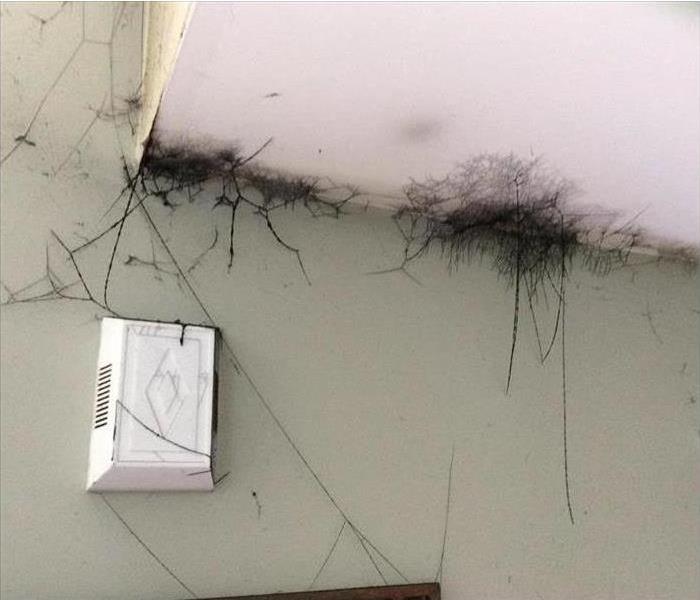 Soot Webs from Residential Fire
Soot Webs from Residential Fire
There are three general types of soot residues typically produced in a fire.
- Protein Residues
- Natural Substance Odor and Residue
- Synthetic Residues
Protein residues result from overcooked or burned meat, fish or beans. The residue color ranges falls somewhere between yellow and brown. The texture is greasy and sticks to most surfaces it comes in contact with. Thorough cleaning with water-based cleaning solutions can effectively clean this type of residue, as long as the target surface is wet cleanable (not damaged by water.)
Natural Substance odor or residue result from burned paper or wood. Campfires, forest fires and wood fireplaces produce natural substance odors. These residues are grey to black and have a dry, powder-like texture. Natural residue can be removed easily with vacuums and other dry preconditioning techniques, followed by wet cleaning techniques. Natural substance residues are easier to clean and deodorized compared to protein and synthetic types.
Synthetic residues result where the burned material is oil based. Carpets, upholstery, window shades and draperies, furniture and toys are typically constructed with synthetic materials. All synthetic materials produce a thick, heavy black smeary residue when they burn, for example, burned plastics. If the burn residue is left undisturbed on a surface, much of this residue may easily be vacuumed away. On the other hand, touching the residue will smear it into a surface creating more work ahead for the Project Manager. Fires involving synthetic materials will often leave behind ornate soot-covered webs, sometimes called smoke webs, tags or streamers.
Personal Protective Equipment (PPE) for fires
3/30/2019 (Permalink)
The preferred safety strategy is to establish engineering controls, which control the work environment so as to reduce employee exposure to the hazards of fire damage. For example, when working in areas containing loose soot residue, it is highly recommended that Project Managers and Technicians use appropriate air quality controls, such as exhaust fans and HEPA air scrubbers.
Workers should also be equipped with personal protective equipment (PPE) as a last line of defense after engineering controls have been utilized. The type of PPE you use is dependent on the exposures they will encounter, and the level of protection is based on risks identified in the initial hazard inspection and risk assessment.
PPE are safety devices and clothing that ensure the basic health protection and safety of users. PPE is any device or garment worn by an individual to prevent exposure to one or safety and health hazards. PPE includes all clothing and other work accessories designed to create a barrier against or restraints from workplace hazards following a fire. For example:
- Chemical resistant gloves
- Slash goggles or goggles with a vapor seal
- Appropriate respirator
- Hard Hat
- Work boots
- Protective clothing
In addition to PPE are personal protective technologies and devices that provide a worker with early warning of a hazard or otherwise help keep the Project Manager safe from harm. Such technologies include sensors that detect toxic atmospheres and communication devices used for safe deployment of emergency workers.
Using PPE requires hazard awareness and training on the part of the user. Our employees must be aware that the equipment does not eliminate the hazard; if the equipment fails, exposure will occur. To reduce the possibility of failure, equipment must be properly fitted and maintained in a clean and serviceable condition.
Testing for Smoke Residue
3/30/2019 (Permalink)
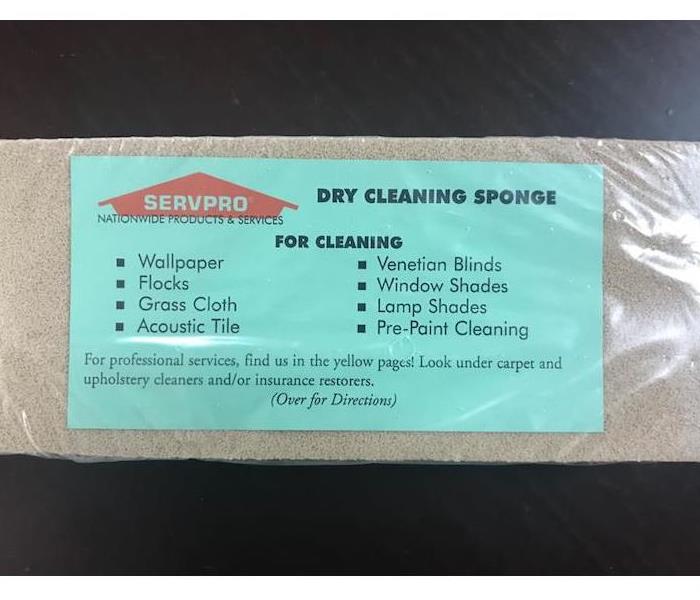 Dry Sponge used for testing for smoke residue.
Dry Sponge used for testing for smoke residue.
In areas where visual signs are not evident but smoke odors still exist, it will be necessary to test for smoke. It is the adjoining and more distant areas such as spaces inside wall cavities, and in basement, attics, and walk-in closets, where a methodical inspection is necessary. Smoke deposits will likely be found in and on the following areas:
- Cold surfaces
- Outside walls of the structure
- Glass surfaces
- Metallic surfaces
- Horizontal surfaces
- Surfaces that carry state charges, such as plastic garment bags
- HVAC system filters
- Inside HVAC system ducting
Soot and odor are evaluated as levels of contamination ranging from light to heavy. These levels are determined based on the experience of the Project Manager and his or her observations during testing. Testing provides positive proof and valid documentation that smoke contamination does in fact exist. Insurance companies need this documentation from our Project Managers in order to extend the scope of work necessary to properly clean up after a fire.
Initially the Project Manger collects "swipe tests" of all the surfaces listed above. Cosmetic wedges, dry sponges or white facial tissues work well for sample collection. Occasionally the customer and/or adjuster may ask if a particular damaged item or surface can be restored. When this occurs we first test the item before making an appropriate decision.
Board-up: Securing your home or business
3/30/2019 (Permalink)
 Fitted insert board-up
Fitted insert board-up
If doors or windows have been damaged or destroyed in a fire, rain and wind may enter the building and cause further damage. Also, curious onlookers or vandals may attempt to enter a damaged building. To help prevent these problems, it may be necessary to "board-up" the property.
The board-up procedures should provide durable protection for the damaged structure and cause minimal additional damage to building surfaces. Board-up methods include:
- Cover-over
- Fitted inserts
- Bolt tension
- Tarps and shrink wrap systems
The cover-over system is easy to install and probably most applicable on roofs. Large expanses of roof can be covered quickly with heavy-duty tarps. Fitted insert board-ups are more difficult to install but are more weather tight than the cover-over system.
Bolt tension methods are relatively easy to install and have the advantage of being weather resistant and difficult for intruders to disengage. Placing carpet or carpet pad on the interior brace will prevent additional damage to wall surfaces.
Heroes for Kids Telethon for Shriners Hospital for Children - St Louis
3/29/2019 (Permalink)
 Chestnas SERVPRO Team donating our check from the 7th Annual SERVPRO Golf Tournament to benefit Shriners Hospital for Children - St Louis.
Chestnas SERVPRO Team donating our check from the 7th Annual SERVPRO Golf Tournament to benefit Shriners Hospital for Children - St Louis.
We joined KMOV and Shriners Hospitals for Children - St Louis yesterday for the KMOV Cares: Heroes for Kids Telethon. During this day of inspiration we heard firsthand experiences and stories from the people who make Shriners Hospital so special. Thank you to everyone who donated to Shriners Hospital - St Louis during the Heroes for Kids Telethon! Over $100,000 was donated during the telethon yesterday.
Our Shriners Hospital specializes in children's orthopedics, from simple fractures to complex surgeries. They will treat your children like their own, regardless of your ability to pay. They are working hard to transform children's lives and provide them with a brighter future.
Shriners Hospital for Children - St Louis has a special place in the hearts of the Chestnas SERVPRO Team. One of our franchise owners, Jeff Chestnas, has been a part of the Shriners Organization for over 9 years by giving back his time, efforts, and money to help this organization succeed. We happily donate to Shriners Hospital for Children - St Louis every year, by hosting our annual golf tournament. The Chestnas SERVPRO Team was able to donate $25,400 to the hospital from the 7th Annual SERVPRO Golf Tournament, and hope to surpass that number at the 8th Annual SERVPRO Golf Tournament later this year.
The tournament will be held on August 28, 2019 at Tapawingo National Golf Club. To play, donate, sponsor or help out please call (314) 858-1688 with any questions.
Extraction: Remove the Easy Water First
3/29/2019 (Permalink)
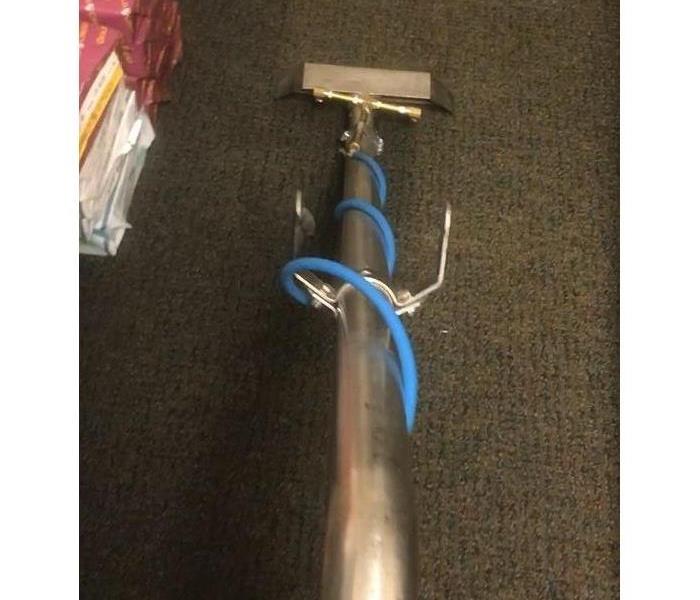 Light Extraction Wand used to remove excess water.
Light Extraction Wand used to remove excess water.
The most effective way to speed the drying process is to remove as much of the water in a liquid state as possible during the extraction phase of the restoration project. Poor extraction will significantly slow the drying process.
Extraction and evaporation are the only ways water can be removed from a wet structure. During the extraction process, liquid water is extracted, mopped, squeegeed or otherwise removed from the structure. This takes some energy, but not nearly as much as evaporation.
The most important factor in extraction is not how much water is removed, but how much water is left behind. It is important to remember that every drop of water left behind will add time to the drying project.
The two-step process for carpet and pad extraction:
- The primary goal of the initial extraction of the affected area is to contain further migration of the water within the structure. This step is accomplished using a light wand attached to either a portable or truck mounted extraction unit.
- The deep extraction process is accomplished by using a sealed or weighted extraction tool attached to either a portable or truck mounted extraction unit.
If deep extraction is not available, the carpet pad must be removed to prevent lengthy drying times. Otherwise, excess water will remain in the carpet underlay. This water must be removed through evaporation, which prolongs the drying process. It also increases the amount of equipment required to meet drying timelines and drastically increases the likelihood of secondary damage to the structure and its contents.
Primary and Secondary Damage following a Water Intrusion
3/29/2019 (Permalink)
Water intrusions will affect building materials both immediately and over time. Damage that occurs immediately by direct contact with water is referred to as primary damage. Damage that occurs because material remains wet for an extended period of time is referred to as secondary damage.
Water also affects materials indirectly. Excessive moisture leads to elevated humidity. Many building materials will absorb excess water vapor and suffer damage, especially when the air in the structure is allowed to remain above 60% relative humidity. This form of damage from high humidity is also referred to as secondary damage. Secondary damage includes dimensional changes, loss of structural integrity, microbial growth and staining.
Hygroscopic materials absorb moisture easily, whether from direct contact with water or from exposure to high humidity. As a result, hygroscopic materials are very susceptible to secondary damage. Such materials gain and lose moisture continually in an effort to equalize with the water content in the surrounding air. The more hygroscopic the material, the faster it will collect water vapor, and the easier it will suffer secondary damage.
Why we Monitor on a daily basis
3/29/2019 (Permalink)
Drying progress is noted during daily monitoring visits. The Project Manager asks "Is it drying?" while comparing the moisture readings taken from two separate monitoring visits. These two sets of data, recorded in DryBook, reflect the impact of the drying effort on the affected materials over a 24-hour period.
If materials are making significant progress after the initial 24-hours of drying, then drying continues; no major change is necessary to the process. Our Project Manager continues to observe progress until drying is complete.
If materials are not drying, it is clear that the current approach is not working. The Project Manager must re-evaluate the equipment, systems and processes and refine our approach. The approach can be more aggressive, or more disruptive. The evaluation process is identical to the initial assessment except in one important detail. Now the material has been wet for an additional 24 hours. Damage and contamination are of greater concern.
This cycle of evaluation and re-evaluation must continue throughout the restoration project. The critical element to the process is that drying progress must be constant. If the drying process is not working, the Project Manager must modify the drying environment by adding or subtracting equipment or possibly removing wet, non-salvageable materials. The most economical and effective methods are best identified by a consistent focus on contamination, damage and cost.
Desiccant Dehumidifiers
3/28/2019 (Permalink)
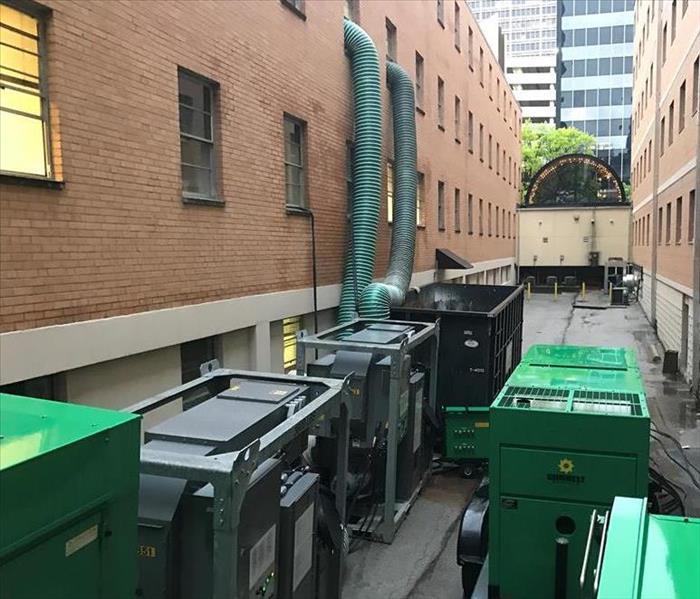 Desiccant Dehumidifier used for Commercial Water Damage
Desiccant Dehumidifier used for Commercial Water Damage
Desiccant Dehumidifiers utilize chemical attraction instead of condensation to remove water from the air. Because they do not use condensation, they are not limited by low dew point temperatures, and when used properly, they produce the lowest vapor pressure of any dehumidifier. Portable desiccant dehumidifiers work best in cool and/or dry environments. The cooler and drier the air going into the desiccant, the drier the air will be coming out.
Desiccants are commonly used to dry dense materials (hardwood floors and plaster walls) due to the large vapor pressure differentials they can create between the surface and the air, Desiccants excel at large loss drying, because they can be made in virtually any size.
Desiccants do not collect water in a pan for automatic pump-out. Instead, they produce damp reactivation air, which must be vented outside the structure using temporary ducting. This venting often results in a pressure differential in the drying environment. The dry "processed air" is ducted into the affected area.
Desiccant dehumidifiers range in size and configuration dramatically. Desiccants used in restorative drying can be as small as a roll-on suitcase or as large as two semi tractor-trailers. Large desiccants are often self-contained dehumidification systems, utilizing onboard generators and running on propane or diesel fuel. When large catastrophic events occur, such as hurricanes or flooding, large desiccants can provide a means of dehumidification when little or no power is available.
How to effectively utilize Drying Chambers
3/28/2019 (Permalink)
 Drying Chamber being set up by containing the affected area.
Drying Chamber being set up by containing the affected area.
One way to gain efficiency in a drying environment is to set up a drying chamber. A drying chamber is defined as the area in which the Project Manager will manipulate and control temperature, humidity and air flow to promote evaporation. Drying Chambers can be set up in a number of ways, including:
- Closing doors
- Taping up plastic sheeting
- Erecting semi-permanent barriers with plastic sheeting (Containment)
Inside the drying chamber is the best location for basic wet (salvageable) furnishing and contents. They will dry along with the structure.
Drying chambers can be very effective for large losses. If only a portion of the building is affected, we can contain the affected area to help speed up the drying process. Drying chambers can be an effective procedure for containing the potential spread of contaminants. Isolate contaminated materials by erecting containment barriers. Containment is even more effective when negative air pressure in maintained in the contaminated area. Negative air pressure is produced by exhausting air from the area with an air filtration device (AFD) while using barriers to restrict incoming air.
The Role of Air Movement for Evaporation
3/28/2019 (Permalink)
Two aspects of air movement influence evaporation of moisture from materials:
- Velocity - The speed of the air moving across surfaces.
- Volume - The quantity or amount of air moving during a period of time.
Velocity is a multiplier in the evaporation process, multiplying the rate that evaporation occurs. The velocity of airflow is comparable to wind speed. Higher wind speed will result in higher evaporation rates. Likewise, the faster the velocity of air moving over a wet surface, the better the rate of evaporation will be. Velocity is measured in feet per second (FSP), feet per minute (FPM), or miles per hour (MPH), and can be determined using an anemometer.
Volume is critical to the circulation of air. Airflow used for drying must have high wind speed, but that wind must be dry air. The source of dry air usually is a mechanical dehumidifier, though it could also be the outdoor environment. Regardless of the source, the dry air must be distributed or circulated throughout the affected area, much like the heated or cooled air from an HVAC system must be distributed throughout.
Moving air from one location to another is a product of mass, or volume, and is usually expressed in Cubic Feet per Minute (CFM). We measure air movers in terms of CFM to indicate how much air the air mover is able to move around.
Project Managers can better control air movement when they understand the roles of air volume and air velocity. Volume is not velocity. Adequate velocity is critical for increasing the rate of evaporation. Adequate volume is important when trying to circulate warm, dry air throughout especially large and complex structures.
Red Cross Month - Be a Hero in Your Community
3/18/2019 (Permalink)
March is Red Cross Month, a tradition begun by President Franklin D. Roosevelt in 1943. President Donald Trump has proclaimed March as Red Cross Month across the country. You can read the entire proclamation here.
During Red Cross Month, the American Red Cross asks everyone to be a hero in their community by becoming a volunteer, learning lifesaving skills, giving blood or donating to #help1family on Red Cross Giving Day, March 27.
The need to help people is constant—and the past year of busy disaster activity was no exception. For 324 consecutive days, more than 43,000 people relied on the Red Cross for emergency shelter following events like record wildfires, hurricanes, floods and large apartment fires. From April 2018 to February 2019, more than 11,500 Red Cross volunteers left the comfort of their own homes to provide comfort, care and a safe place to sleep for tens of thousands affected by disasters.
“During Red Cross Month, we honor the volunteer heroes who help families overcome life’s emergencies every day,” said Gail McGovern, president and CEO of the American Red Cross. “These champions are our neighbors—ordinary people who make an extraordinary difference to ease the suffering of others, whether it’s saving a person’s life with CPR, donating blood for a hospital patient with life-threatening conditions, or comforting a family overwhelmed by a home fire or other crisis. We ask you to consider joining these heroes to answer the call for service in your community.”
There are lots of ways you can help. Does responding to local or national disasters appeal to you? How about helping hospital patients by sponsoring a blood drive or greeting blood donors at bloodmobiles?
Would you like to support our Services to the Armed Forces program by helping patients in military hospitals and at Veterans’ Administration facilities? Is teaching something you like to do? Why not be a volunteer instructor and teach first aid / CPR / AED classes or babysitting classes?
How about helping people all over the world? Become an International Humanitarian Law instructor. Or you could support our International Tracing Services and reunite families living overseas, in war-torn countries or even in your community.
Savvy on social media? Be an online advocate and tell the Red Cross story. Serve on local boards and help with fundraising and marketing. Be part of the behind-the-scenes Red Cross team by volunteering in our offices.
These are just a few of the ways you can make a difference as a Red Cross volunteer. To find out more, including how to apply, visit the ‘Volunteer’ information on redcross.org.
HOW YOU CAN #HELP1FAMILY Learn more about how you can help in your area by contacting your local Red Cross chapter or visiting redcross.org:
In addition to volunteering, you can:
- Give blood: Make an appointment to donate lifesaving blood or platelets.
- Learn lifesaving skills: Register for a class to learn first aid, CPR and other skills.
- Make a financial donation: On March 27—American Red Cross Giving Day—donate at redcross.org/givingday, uniting with thousands of people like you to help families during the first devastating hours of a disaster. Your gift can provide hope and urgent relief like food, shelter and other essentials for families who need it most.
Here at SERVPRO of Fenton/South Ballwin, we have seen these amazing volunteers out assisting our homeowners who have been affected by fire damages. Not only do they have great compassion but are assisting with basic needs during their hardship.#SERVPROSTRONG #REDCROSSHERO
Why March Brings the Most Variety of Extreme Weather in the U.S.
3/18/2019 (Permalink)
When March arrives, what are the first things you think of? Spring, baseball, flowers blooming?
The atmosphere in March is often much less tranquil. Based on history, one could make an argument that March consistently sees the greatest variety of dangerous weather of any month in the U.S.
Why is this the case?
By definition, spring is a transition time between the persistent cold of winter and the heat of summer. The sun is increasingly higher in the sky each day, and there's increasing daylight, allowing the air to warm more efficiently.
At the same time, there's still lingering snowpack and colder air in Canada and parts of the northern and western U.S. in March.
Superimposed on this tension between increasing warmth and lingering cold is a still-active March jet stream, often taking large southward plunges over the U.S.
When this happens, the potential energy of the temperature contrast gets released in the form of an intensifying low-pressure system that can spawn a snowstorm, severe weather outbreak, rainfall flooding, coastal flooding and high winds.
Perhaps the most recent March poster child for such a storm with multiple facets was the aptly named Superstorm of March 12-15, 1993.
It began with a squall line of severe thunderstorms racing across the eastern Gulf of Mexico, driving storm surge over much of Florida's Gulf Coast. That squall line then raced across the Florida Peninsula, spawning 11 tornadoes. Wind gusts up to 109 mph were clocked in the Dry Tortugas, west of Key West. Havana, Cuba, suffered a blackout due to the high winds.
(MORE: Historic Coastal Floods in the East)
To the north, whiteout conditions were reported in Atlanta, 6-foot drifts were seen near Birmingham, Alabama, and double-digit snowfall fell in 20 states from Alabama to Maine. Thousands were isolated by snow in the Southeast, and over 200 hikers needed to be rescued in the Smoky Mountains.
For the first time in history, every major airport on the East Coast was closed for a period of time due to this storm.
While not every March storm is a "Superstorm", the history of March storms is a long one. Here are some highlights by impact.
Snowstorms
Multiple parts of the county have seen their share of powerhouse March snowstorms.
(MORE: Where March is the Snowiest Month)
These snowstorms often either hook out of the Rockies into the Plains, or track up the East Coast.
In mid-March 2017, Winter Storm Stella hammered the interior Northeast with up to 4 to 5 feet of snow, a record snowstorm for Binghamton, New York.
Denver's second heaviest snowstorm was a mid-March 2003 whopper, when over 2.5 feet of snow in less than two-days' time effectively shut down the city.
(MORE: 4 Dangers of Heavy, Wet Snow)
Just four days after spring officially arrived, over 6 inches of snow buried a swath from Atlanta to Charlotte to Raleigh in 1983.
The deadliest March snowstorm was the infamous Blizzard of 1888, which dumped 40 to 60 inches of snow in New York, Connecticut and New Jersey, wind-whipped into drifts which topped some homes. Four hundred were killed in the storm and its cold aftermath.
Here are a sampling of other notable March snowstorms:
- Late March 1987: Three-day blizzard produced gusts to 78 mph at Dodge City, Kansas and Altus, Oklahoma. Pampa, Texas, picked up 20 inches of snow. Forty-six Kansas counties declared disaster areas.
- Early March 1966: Blizzard across North Dakota, Minnesota produced wind gusts to 100 mph, whipping snow into drifts 30 to 40 feet high, paralyzing travel for three days.
- Early March 1717: Four separate snowstorms hit the East in nine days, with up to 4 feet of snow in Boston and drifts to 25 feet in Dorchester, Massachusetts.
Tornado Outbreaks
While severe weather can occur any time of year the ingredients align, March is typically when arctic fronts become less potent enough to allow warm, humid air to surge north more often in their wake ahead of vigorous jet-stream disturbances swinging out of the West.
The tornado threat tends to be highest in March in a corridor from the Southern Plains into the Tennessee Valley and Deep South. Central Florida can also be a tornado hot spot in March.
(MORE: Tornadoes in March)
On March 2-3, 2012, 75 tornadoes were spawned from the Ohio Valley to the Deep South, killing 40. EF4 tornadoes hit Henryville, Indiana, and Crittenden, Kentucky. EF3 tornadoes hit West Liberty, Kentucky, and damaged the Paulding County, Georgia Airport.
Occasionally, these outbreaks occur farther north, when unusually warm and humid air intrudes ahead of a powerful jet stream and frontal system.
On March 29, 1998, 14 tornadoes, 13 of which were spawned from one supercell, tore through southern Minnesota, including the towns of Comfrey and St. Peter.
Even in what most conventionally think of as "tornado alley", the March 13, 1990, outbreak was a massive outbreak for March.
Fifty-nine tornadoes were spawned in Oklahoma, Kansas, Nebraska and Iowa, including a pair of F5s in Hesston and Goessel, Kansas. These were the strongest tornadoes reported so far northwest in the U.S. so early in the season.
Perhaps the most infamous March outbreak was the Tri-State Tornado Outbreak in 1925, claiming 747 lives in seven states on March 18, 1925.
According to Dr. Greg Forbes, severe weather expert for The Weather Channel, recent research has found that instead of being one single tornado, it's now believed a family of at least three tornadoes had a combined path of at least 235 miles in Missouri, Illinois and Indiana.
Here are some other notable severe weather and tornado events in March:
- March 28, 2000: Back-to-back tornadoes struck Ft. Worth, then Arlington, Texas, shattering windows, killing three.
- March 25, 1992: Hail up to 4 inches in diameter pelted the Orlando metro area, virtually shutting down the area's nursery industry due to broken glass.
- March 28, 1984: At least 22 tornadoes tore through the Carolinas, including a 2.5-mile wide F4 near Tatum, South Carolina
- March 25, 1952: Deadliest outbreak in Arkansas history, with 111 dead. In all, tornadoes claimed 343 lives in the South. One F4 tornado leveled the town of Judsonia, Arkansas.
- March 20-22, 1932: One of the worst outbreaks in U.S. history from Mississippi to South Carolina to Indiana. Ten F4 tornadoes tore through Alabama, Georgia and Tennessee on March 21 alone.
Floods
Snow melting quickly during a sharp warm spell can and often does trigger spring flooding.
Some of the most serious flooding occurs when heavy rain falls in the spring as the ground is still soaked from absorbing spring meltwater.
For this, March is almost synonymous with flooding in the Ohio Valley.
The early March 1997 flood was the highest in Cincinnati since 1964, and in some places in 60 years. Parts of the Ohio Valley picked up 10 to 13 inches of rain, sending the Ohio River and its tributaries into major flood.
During the heart of the Dust Bowl, a mid-March "great flood" in 1936 set records in Pittsburgh, with additional flooding stretching as far northeast as Maine.
(MORE: Flood Disasters More Common Inland)
Another destructive "great flood" in March 1913 was estimated to have claimed at least 1,000 lives, swamping the Miami River Valley of Ohio, including Dayton.
Most recently, over 21 inches of rain triggered record flooding in parts of east Texas, Louisiana and Mississippi in March 2016. Particularly hard hit were the cities of Monroe and Shreveport, Louisiana, as well as the Sabine River.
East, West Coast Storms
We earlier mentioned the 1993 Superstorm as perhaps the ultimate, recent example of March's fury.
Certainly there are other examples of fierce nor'easters in March, including a late March 1984 storm that produced nearly 100 mph winds at Martha's Vineyard, and the infamously destructive Ash Wednesday 1962 storm along the Mid-Atlantic seaboard.
Some March storms in the West can pack heavy snow, high winds and flooding rain.
From March 16-27, 2011, Tahoe City, California, picked up 82.5 inches, just under 7 feet, of snow.
In that same storm siege, over 11 inches of rain fell in the mountains above Santa Barbara, California, and winds gusted to 110 mph in Big Bear, California.
By early March 1983, snow depths at Lake Tahoe reached 215 inches, prompting officials to warn cross-country skiers to avoid skiing into power lines buried by the massive snowpack.
Up to 18 inches of rain fell in parts of the L.A. Basin during that storm parade, punctuated by a pair of tornadoes on March 1, 1983.
An 8-foot wall of water roared down Santa Ana Canyon on March 3, 1938, after torrential rain, swamping areas between Santa Ana and Huntington Beach. Nineteen were killed and 2,000 were left homeless by this flood.
Another 113 lives were lost in flooding along the Los Angeles River from that 1938 event.
Here at SERVPRO of Fenton/South Ballwin, over the last 15 years we have seen first hand all kinds of weather extremes.
We are here to help 24/7/365 to help if your family or community is affected by any weather patterns. 636-527-5990
Jon Erdman-weather.com
Tornado Safety- What Should You Do?
3/11/2019 (Permalink)
Spring is just around the corner, the time of year when tornadoes are most common. However, powerful storms such as the ones which recently occurred in Alabama can happen at any time of the year. In fact, some experts say new parts of the country may see an increased threat of tornadoes in their areas.
TORNADO FACTS
- Tornadoes can happen anywhere, at any time of day but are most likely to occur between 3:00 and 9:00 p.m.
- The United States receives more than 1,200 tornadoes every year.
- The National Oceanic and Atmospheric Administration (NOAA) reports there were as many as 800 confirmed tornadoes in 2018.
- NOAA also reports the four deadliest states for tornadoes are Alabama, Missouri, Tennessee and Arkansas.
- Most tornadoes occur east of the Rocky Mountains.
- The area where we see the most tornadoes seems to be moving from the Plains states to the Southeast and Midwest, especially to states along the Mississippi River.
TORNADO SAFETY
- KNOW YOUR COMMUNITY’S WARNING SYSTEM. There are different ways to notify people about tornadoes. Many communities use sirens intended for outdoor warning purposes.
- · IDENTIFY A SAFE PLACE IN YOUR HOME where you can gather – a basement, storm cellar or interior room on the lowest floor with no windows. In a high rise, pick a hallway in the center of the building as you may not have enough time to get to the lowest floor.
- SECURE ITEMS OUTSIDE that can be picked up by the wind.
- If you live in a mobile home, find a safe place in a nearby sturdy building. NO MOBILE HOME IS SAFE IN A TORNADO.
- KNOW THE WARNINGS. A tornado watch means a tornado is possible. A tornado warning means a tornado has been sighted or indicated by weather radar. IMMEDIATELY GO TO YOUR SAFE PLACE.
- WATCH FOR TORNADO DANGER SIGNS: dark, often greenish clouds, wall cloud, cloud of debris.
- BRING YOUR ANIMALS INDOORS and maintain direct control of them.
- IF YOU ARE OUTSIDE, look for the closest option to:
o Seek shelter in a basement, storm shelter or sturdy building.
o If you can’t walk to shelter, get into a vehicle and try to drive to a safe shelter.
o If strong winds and debris are occurring, pull over and put your vehicle in park. Keep your seat belt on and engine running. Protect your head by leaning down below the windows, covering your head with your hands and a blanket or jacket.
o Stay away from bridges and highway overpasses.
What should you do to be prepared for any weather emergency that threatens your community? Planning is the key. Being prepared is just a few short steps away:
1. GET A KIT. If you’ve ever fumbled to find a flashlight during a blackout, you know what it feels like to not be prepared. Get your emergency preparedness kit ready. You should include:
- Three-day supply of non-perishable food and water—one gallon per person, per day for drinking and hygiene purposes
- Battery-powered or hand crank radio (NOAA Weather Radio, if possible)
- Flashlight and extra batteries
- First aid kit, medications and medical items
- Copies of all important documents (proof of address, deed/lease to home, passports, birth certificates, insurance policies)
- Extra cash
2. MAKE A PLAN. Talk with household members about what you would do during emergencies. Plan what to do in case you are separated, and choose two places to meet - one right outside your home in case of a sudden emergency such as a fire, and another outside your neighborhood in case you cannot return home or are asked to evacuate.
- Choose a contact person from out of the area and make sure all household members have this person’s phone number and email address. It may be easier to call long distance or text if local phone lines are overloaded or out of service.
- Tell everyone in the household where emergency information and supplies are kept.
- Practice evacuating your home twice a year. Drive your planned evacuation route and plot alternate routes on a map in case main roads are impassable.
- Don’t forget your pets. If you must evacuate, make arrangements for your animals. Keep a phone list of “pet friendly” motels/hotels and animal shelters that are along your evacuation routes.
3. BE INFORMED. Know the risks where you live, work, learn and play.
- Arm yourself with information about what to do in case an emergency occurs. Remember that emergencies like fires and blackouts can happen anywhere, so everyone should be prepared for them.
- Find out how you would receive information from local officials in the event of an emergency.
- Learn first aid and CPR/AED so that you have the skills to respond in an emergency before help arrives, especially during a disaster when emergency responders may be delayed. A variety of online, in-classroom and blended (part online and part in the classroom) training courses are available at redcross.org/takeaclass.
In the event you sustain damage from high winds or water damage SERVPRO of Fenton/South Ballwin is available 24/7/365 to assist you. (636)527-5990
Heating Fire Safety
1/18/2019 (Permalink)
Heating equipment is a leading cause of fires in U.S. homes. Local fire departments responded to an estimated average of 52,050 fires involving heating equipment each year in 2012-2016. These fires resulted in annual losses of 490 civilian deaths, 1,400 civilian injuries, and $1 billion in direct property damage. The homes include one- and two-family homes (including manufactured homes) and apartments (including townhouses and other multi-family dwellings). Space heaters are the type of heating equipment most often involved in home heating fires, figuring in two of every five of these fires and accounting for 86% of associated civilian deaths, 78% of civilian injuries, and 54% of direct property damage.
- Heating equipment fires accounted for 15% of all reported home fires in 2012-2016 (second behind cooking) and 19% of home fire deaths.
- The leading factor contributing to home heating fires (27%) was failure to clean, principally from solid-fueled heating equipment, primarily chimneys.
- The leading factor contributing to ignition for home heating fire deaths (54%) was heating equipment too close to things that can burn, such as upholstered furniture, clothing, mattress, or bedding.
- Most home heating fire deaths (86%) involved stationary or portable space heaters.
- Nearly half (48%) of all home heating fires occurred in December, January and February.
Here at SERVPRO of Fenton/South Ballwin we want you to be safe this winter. If you sustain any damages due to any heating source we are here to help 24/7/365 at (636) 527-5990.
Record snowfall in Ballwin Missouri could cause an ice dam in your home.
1/13/2019 (Permalink)
 Cross section of a home with an ice dam.
Cross section of a home with an ice dam.
What is an ice dam?
An ice dam is a ridge of ice that forms at the edge of a roof and prevents melting snow (water) from draining off the roof. The water that backs up behind the dam can leak into a home and cause damage to walls, ceilings, insulation, and other areas.
What causes ice dams?
There is a complex interaction among the amount of heat loss from a house, snow cover and outside temperatures that leads to ice dam formation. For ice dams to form there must be snow on the roof, and, at the same time, higher portions of the roof's outside surface must be above 32 degrees F while lower surfaces are below 32. For a portion of the roof to be below 32, outside temperatures must also be below 32. When we say temperatures above or below 32, we are talking about average temperature over sustained periods of time.
The snow on a roof surface that is above 32 will melt. As water flows down the roof it reaches the portion of the roof that is below 32 and freezes. Voila! - an ice dam.
The dam grows as it is fed by the melting snow above it, but it will limit itself to the portions of the roof that are on the average below 32. So the water above backs up behind the ice dam and remains a liquid. This water finds cracks and openings in the exterior roof covering and flows into the attic space. From the attic it could flow into exterior walls or through the ceiling insulation and stain the ceiling finish.
Preventing and dealing with ice dams
Immediate action
- Remove snow from the roof. This eliminates one of the ingredients necessary for the formation of an ice dam. A "roof rake" and push broom can be used to remove snow, but may damage the roofing materials.
- In an emergency situation where water is flowing into the house structure, making channels through the ice dam allows the water behind the dam to drain off the roof. Hosing with tap water on a warm day will do this job. Work upward from the lower edge of the dam. The channel will become ineffective within days and is only a temporary solution to ice dam damage.
Long-term Actions
- First, make the ceiling air tight so no warm, moist air can flow from the house into the attic space.
- After sealing air leakage paths between the house and attic space, consider increasing the ceiling/roof insulation to cut down on heat loss by conduction.The proper new construction practices to prevent ice dams begin with following or exceeding the state code requirements for ceiling/roof insulation levels.Recessed lights, skylights, complicated roof designs, and heating ducts in the attic will all increase the risk of ice dam formation.Moisture entering the home from ice dams can lead to the growth of mold and mildew. These biologicals can cause respiratory problems. It is important that the growth of mold and mildew be prevented. This can be done by immediately calling SERVPRO of Fenton/South Ballwin, 24/7/365 at (636)527-5990 to dry out portions of the house that are wet or damp. Action needs to be taken to clean the home environment and maintain its air quality.
Do You Know Your Zone?
10/31/2018 (Permalink)
We ALL live in a flood zone and we are all at risk of floods damaging our property. MSD wants to encourage homeowners, renters, and business owners to educate themselves on their individual flood risk. A good place to start is with the National Flood Insurance Program. Click the link below to get started!
www.FloodSmart.gov
FLOOD FACTS
Anytime it rains, overland flooding can occur. So that means we ALL live in a flood zone.
Flood risks range from low, moderate, or high. Your insurance will be determined by where you live and the risk of overland flooding.
You don't have to live near a river, creek or stream to be a victim of flood damage.
Twenty percent of all insurance claims come from areas that are not in a high risk flood zone.
The average flood damage claim for homeowners and renters exceeds $35,000 in damages. Most homeowners' insurance does not cover these costs.
Flood insurance is designed to restore your property to its pre-disaster condition. There's no better way to protect the life you've built.
If your home or business is affected by flood waters, SERVPRO of Fenton/South Ballwin is here to help 24/7/365!
Flooded Commercial Business in Fenton, Mo
9/13/2018 (Permalink)
This flooded Business in Fenton, MO was the result of a near by lake flooding. The business office was flooded with muddy water causing not just water but mud to get everywhere. Our crews extracted the water throughout the commercial building. After the rest of the water was extracted the crews then tore up the tile flooring and took down the walls that were affected by the floor damage. The whole clean up process took three weeks. Three weeks may seem like a long time but with the amount of space that was damaged our crews kicked butt and got everything back "Like it never even happened." sooner than the business owner thought. The owner of the building was very pleased with how fast our crews worked and how great everything looked at the end.
Never use a DIY mold test, Heres why!
8/27/2018 (Permalink)
If you look on the internet, there are scores of DIY mold test kits. Before you invest in one of these kits, here are things you ought to know about mold:
- Mold is everywhere and every single house has some form of “mold.”
- Most self-test mold kits only tell you if your home has mold, but often provides false negatives and positives. It also does not tell you what kind of mold or how to kill it.
A true mold test can only be conducted by a Professional Environmental testing company; they determine the type of mold, the source of the moisture, and how to kill the mold at the core. They create a protocol, which can be read by an IICRC professional (like us!). It’s best to use a testing company that does not do cleaning themselves because their assessment will be unbiased.
- Mold is more often hidden, sometimes under the floor or in the walls, or in your air ducts
Where the mold is located, often dictates where the moisture is affecting the building
- Untreated water damage may result in mold growth within 24-48 hours of the event
Wood, insulation, fiberglass, carpet and other organic substances become a thriving environment for mold once there is moisture present for more than 24 hours. After a week, it is almost guaranteed.
Free estimates or removing mold yourself cost homeowners more in the long run
Be wary of companies who advertise free mold testing. Free mold tests are often offered by people who are uncertified or inexperienced and if they do the mold testing themselves, they are using these kits mentioned above. Unless they are a certified Environmental Hygienist and have a PhD in microbiology, they do not have the knowledge or resources to truly diagnose the mold condition in your home.
- The source of the mold is never addressed, so the problem is reoccurring.
- They use the “self-test” kits mentioned above instead of environmental testing with diagnostics
- Remove only topical mold instead of killing it at the source
- They often remove more walls and floors than needed which increases the price to rebuild.
- They do not remove enough, or don’t use the right materials which brings the mold back.
This means you have to pay to have it removed again, and have more sanitation and demolition performed, which increases the price to rebuild and replace tremendously.
What you should do instead
Having mold can be scary, especially if anyone in your home is prone to getting sick (people with asthma, low immune systems, allergies, babies and the elderly). We recommend the following course of action if you need to have mold removed from your home.
- Measure the area affected and check for moisture.
- Call your insurance company, ask:
- If you are covered for mold
- What is your deductible
- What is your coverage
- Ask for a company that they approve of for mold mitigation (Chances are, it’s us.)
If your insurance company says you can use anyone – or if you are not going through insurance then look for someone who is certified in
- IICRC, Water Restoration Technician
- IICRC, Mold restoration
- IICRC, Applied Structural Drying
- Now that you’re armed with knowledge, it’s time to start making some calls.
Now that you know your coverage, how much visible mold there is in your home, and whom your insurance company approves as mold remediation specialists. It’s time to start making some calls.
Coping with flooding in your Fenton, Mo Basement
8/20/2018 (Permalink)
Have you recently suffered a long rain or maybe heavy storms in your area? Understandably, you may feel some apprehension before opening the door to your home's basement in Fenton, MO if you anticipate seeing water covering the floor. While your first instinct may be to grab your wet/dry vac, unfortunately there’s more involved in conducting a successful water cleanup in a basement flood.
How Does Water Get Into the Basement?
There is no one answer to how flooding occurs, but here are some common areas where water finds its way in:
• Window joints
• Cracks in the foundation
• The joint between the foundation footing and the wall
• Water heater or washing machine leaks
• Other joints in the walls, floor, and mortar
• Gutter cracks
• The floor drain
• The sump pump
• Burst sewer pipes
When Should You Call the Professionals?
If you have suffered basement flooding, your best bet is to call restoration specialists who are trained in removing the water and fully drying the area. Their expertise and high-end equipment can restore the room to its original condition. They can also test for hidden water damage lurking behind walls, which can often lead to the development of black mold.
What Is the Restoration Process?
Prior to beginning the restoration process, the specialist must determine any and all points where the water has entered the basement. Repairing the sources of the water prevents additional water from coming in and often includes sealing cracks, joints, and hose or pipe repair.
Professional machine extraction and dehumidifiers remove moisture from the air and the furniture, floors and assorted other materials. Carpet and padding often needs to be removed, and the professionals will determine how much of the baseboards, insulation and sheetrock require removal. After cleaning and sanitizing the affected area, the drying process begins and often requires upwards of three days to complete.
Flooding may seem disastrous, but you can get your basement back. The professionals will work alongside your insurance company to formulate a plan for basement reconstruction and restore your home back to normal. Visit http://www.SERVPROfentonsouthballwin.com for more information on commercial water damage or water damage in a residence.
Dryer Fire Prevention Tips in West Kirkwood and Sunset Hills
7/17/2018 (Permalink)
Did you know that failure to clean the dryer (34 percent) is the leading cause of home clothes dryer fires?! Most of clothes dryer fireshappen in the fall and winter months, than in spring and summer, because of all the bulky clothing you are drying.
Some tips to help prevent dryer fires are: 1. Clean out the dryer vent every time you dry a new set of clothes. 2. Don't add as much clothes to the dryer s you would in the spring or summer. 3. Keep area around the dryer free of flammable items. Clothes drying fires account fro 92 percent of all fires. For more safety tips and prevention checkout: https://www.nfpa.org/Public-Education/By-topic/Safety-in-the-home/Dryers-and-washing-machines
If your Fenton and South Ballwin home or business has been affected by a clothes dryer fire give SERVPRO a call at 636-527-5990 and we'll make it "Like it never even happened."
Smoke Dectors Save Lives
7/10/2018 (Permalink)
Three of every five home fire deaths resulted from fires in homes with no smoke alarms or no working smoke alarms. To lower these rates make sure you replace all of your smoke detectors every 10 years. Here are of couple of things you can do to prevent fires in your Fenton/South Ballwin home or or business!
- Make sure all of your smoke detectors are interconnected. When one sounds, they all sound.
- All of your smoke detectors should be tested once a month.
- Larger homes or businesses will acquire extra smoke detectors.
Your Fenton/South Ballwin home or business is where we are at the greatest risk and where we
must take the most precautions. Most deaths occur from inhaling smoke or poisonous
gases, not from the flames. SERVPRO of Fenton and South Ballwin are here help if your home or business has a had fire due to faulty smoke detectors. Give us a call at 636-527-5990 and we'll make everything "Like it never even happened."
The four W's of Mold
6/6/2018 (Permalink)
Protecting your home from the ravages of mold can be a daunting task if you don't know what to look for or don't know you have it. However, it's a process that every homeowner should consider in order to protect the structural integrity of their home as well as the health and wellness of their family.
The Four W's of Mold...
Who...
The process of determining if you have mold, and if so, what type begins with 5 questions that cover a number of considerations. It's a given that mold only grows in damp conditions. As a result, you must ask yourself if you or a neighbor has a water leak? Mold only takes a few days to form in moist situations. Even if you don't have a leak, your neighbor's leak could become a true bone of contention for you if you live in an apartment or duplex.
What Where and When...
Obviously, if you can visibly see mold you know you have a problem that needs resolving. Determining what type of mold you have becomes the obvious next step. Additionally, if you have water that pools against the exterior of your house when it rains, the moisture will affect not only exterior walls but the interior walls as well. It's just a question of "when."
Other Indicators...
In addition to visibly seeing mold, a musty moldy smell is a good indication that your dwelling has a mold issue. If the atmosphere in your home is humid, and your windows sweat revealing condensation, these are conditions that are ripe for developing a problem with mold if you don't already have one. Flair ups with allergies and illness in your pets are also strong indicators of a mold problem. Mold is a serious issue that can impact not only the infrastructure of your house but the health of you and your family members. Even if you plan on moving it's a good idea to have your new home tested for the presence of mold as a safety measure.
Having your home tested for mold is a good investment to protect the health and the integrity of both your family and your homes structure. After all, an ounce of prevention is always worth a ton of cure.Our crews here at SERVPRO Fenton and South Ballwin have all the necessary equipment to treat and make sure that everything is taken care of, "Like it never even happened." Give us a call at 636-527-5990!
Why Water Damage is NOT a DIY Project
5/29/2018 (Permalink)
Oftentimes, homeowners don't realize the extent of the water damage in their home. Excess moisture is one thing, but damage from a flood, sewer backup or something else can be devastating to your health and your home in general. It doesn't take long for a situation like this to spiral out of control and leave you struggling to figure out what you are going to do to take care of it. The best thing you can do is turn to the help of a professional. Our team at SERVPRO Fenton and South Ballwin has all of the necessary tools to make sure your home is taken care of and the water damage is cleaned up properly.
- Dirty water from sewage backups is loaded with deadly substances from parasites to chemical residues.
- Bacteria, fungi and viruses thrive in contaminated fluids. They pose all sorts of health risks, such as hepatitis and salmonella.
- It only takes 24 hours for mold to begin growing out of control and invading your space.
- Even a small amount of water left undried could be a source of problems for your home.
Our team here at SERVPRO Fenton and South Ballwin has all of the necessary tools and experience to come in and get your water damage taken care of and thoroughly cleaned up to prevent anyone from falling ill or mold setting in.
Smoke and Soot Clean Up
5/22/2018 (Permalink)
Smoke and soot are very invasive and can penetrate various cavities within your home, causing hidden damage and odor. Our smoke damage expertise and experience at SERVPRO allows us to inspect and accurately assess the extent of the damage to develop a comprehensive plan of action.
Smoke and soot facts:
- Hot smoke migrates to cooler areas and upper levels of a structure.
- Smoke flows around plumbing systems, seeping through the holes used by pipes to go from floor to floor.
- The type of smoke may greatly affect the restoration process.
Different Types of Smoke
There are two different types of smoke–wet and dry. As a result, there are different types of soot residue after a fire. Before restoration begins, SERVPRO of Fenton and South Ballwin will test the soot to determine which type of smoke damage occurred. Then the cleaning procedures will be based on the information identified during pretesting. Here is some additional information:
Wet Smoke – Plastic and Rubber
This creates low heat, smoldering, pungent odor, sticky, and smeary. Smoke webs are much more difficult to clean.
Dry Smoke - Paper and Wood
Fast burning, high temperatures, heat rises therefore smoke rises.
Protein Fire Residue – Produced by evaporation of material rather than from a fire
Virtually invisible, discolors paints and varnishes, extreme pungent odor.
Our Fire Damage Restoration Services
Since each smoke and fire damage situation is a little different, each one requires a unique solution tailored for the specific conditions. Here at SERVPRO of Fenton an South Ballwin we have the equipment, expertise, and experience to restore your fire and smoke damage. We will also treat your family with empathy and respect and your property with care.
You Could Be Spreading Mold Through Your Fenton/South Ballwin Home
6/22/2017 (Permalink)
If you see visible mold in Fenton/ South Ballwin home or business, do not disturb it. You can inadvertently spread the mold infestation throughout your home. When mold is disturbed, the mold can release microscopic mold spores which become airborne and can circulate inside your home.
What to Do:
- Stay out of affected areas.
- Turn off the HVAC system and fans.
- Contact SERVPRO of Fenton and South Ballwin for mold remediation services.
What Not to Do:
- Don’t touch or disturb the mold.
- Don’t blow air across any surfaces with visible or suspected mold growth.
- Don’t attempt to dry the area yourself.
- Don’t spray bleach or other disinfectants on the mold.
About Our Mold Remediation Service Server Fenton and South Ballwin specializes in mold cleanup and restoration, in fact, it’s a cornerstone of our business! Our crews are highly trained restoration professionals that use specialized equipment and techniques to properly remediate your mold problem quickly and safely. Our crews will make your home or business "Like it never even happened." so give us a call at 636-527-5990.
For more information about mold visit: http://www.SERVPROfentonsouthballwin.com/mold-remediation
restoring lives in Fenton and South Ballwin MO
6/2/2017 (Permalink)
When the record breaking flooding occurred a couple weeks ago St. Louis, MO, we promptly dispatched our SERVPRO of Fenton and South Ballwin teams to assist in the unprecedented recovery efforts. We were very happy to help many grateful business and home owners during their desperate time of need. Our highly trained technicians are water and storm damage specialists. The goal is always the same, to return your commercial or residential property back to pre-storm condition. Using scientific drying techniques and advanced equipment, we document the drying process to insure the business or home is ready to return to. When water damage happens, a quick response is very important. Night or day, St. Louis business owners and residents can expect our local team of professionals to respond immediately to your water emergency. So give us a call at (636) 527-5990
Quick Helpful Tips For Working With Your Insurance For Restoration
5/25/2017 (Permalink)
Regular life is stressful enough, but if you are surprised with flooding or other water damage in your home, everyone in the household will be stressed. Whether the recent St. Louis flood damage leaves carpeting soaked and soggy or you have come back to a disaster after evacuation, severe weather and damaged pipes will cause significant worry about how to start putting back together your daily life.
However, you can prepare for these unknowns by knowing what to expect and create a plan in case of emergency. To assist you, SERVPRO of Fenton and South Ballwin has put together this mini-guide to help you understand the flood insurance claim process.
The first thing you will want to do is call your insurance provider. Although the U.S. government funds the National Flood Insurance Program (NFIP), local home and rental insurance companies are the exclusive sellers of Flood Damage Insurance. While you will be working directly with an insurance agent, SERVPRO can also serve as a liaison, helping you to navigate through the claims process.
After your initial call to your insurance company, contact your Fenton or South Ballwin at 636-527-5990. We are available every day, all day, to handle your emergencies. Even if you are not able to reach your insurance agent immediately, SERVPRO will take your call and begin to work with you on first response remediation solutions. Have questions about what to do first or what items can be restored? SERVPRO is here to answer those questions and more! Our compassionate team understands your distress and will guide you through the storm damage restoration process.
Now you can begin your water damage restoration. We pride ourselves on having the fastest response time to storm damage in your area. We will arrive at your home prepared to conduct an inspection and moisture readings, create a scope of the damage and provide an estimate for you and your insurance provider. Our team will arrive prepared and ready to start immediately. Using our dedicated SERVPRO Claims Information Center (CIC) we can store and access your information easily and quickly.
Our SERVPRO team members are the premier flood and water damage restoration experts in The Fenton and South Ballwin surrounding areas. We are also the preferred remediation team for home insurance providers, and the most trusted helper for storm disasters. Storm damage restoration and navigating flood insurance claims can feel stressful, but we are here to assist you with every stage of the recovery process.
For emergencies and other situations, call 636-527-5990 anytime to reach your area flood damage experts, SERVPRO Fenton and South Ballwin. We help residential and commercial property owners when natural disasters, water damage, sewer backups, floods, mold infestations, fires and other events happen.
HOW SEVERE LOOK HERE!
5/5/2017 (Permalink)
Water damage can originate by different sources such as a broken dishwasher hose, a washing machine overflow, a dishwasher leakage, broken/leaking pipes, and clogged toilets. Homeowners should inspect and replace worn pipe fittings and hose connections to all household appliances that use water at least once a year. This includes washing machines, dishwashers, kitchen sinks and bathroom lavatories, refrigerator ice makers, water softeners and humidifiers. Below is a specific way SERVPRO has combined different scenarios of water damages of how severe the damage actually is.
Categories
Category 1- Refers to a source of water that does not pose substantial threat to humans and classified as "Clean Water". Examples are broken water supply lines, tub or sink overflows or appliance malfunctions that involves water supply lines.
Category 2 - Refers to a source of water that contains a significant degree of chemical, biological or physical contaminants and causes discomfort or sickness when consumed or even exposed to. Known as "Grey Water". This type carries micro organisms and nutrients of micro organisms. Examples are toilet bowls with urine (no feces), sump pump failures, seepage due to hydrostatic failure and water discharge from dishwashers or washing machines.
Category 3 - Known as "Black Water" and is grossly unsanitary. This water contains unsanitary agents, harmful bacteria and fungi, causing severe discomfort or sickness. Type 3 category are contaminated water sources that affects the indoor environment. This category includes water sources from sewage, seawater, rising water from rivers or streams, ground surface water or standing water. Category 2 Water or Grey Water that is not promptly removed from the structure and or have remained stagnant may be re classified as Category 3 Water. Toilet back flows that originates from beyond the toilet trap is considered black water contamination regardless of visible content or color.
Classes
Class of water damage is determined by the probable rate of evaporation based on the type of materials affected, or wet, in the room or space that was flooded. Determining the class of water damage is an important first step, and will determine the amount and type of equipment utilized to dry-down the structure.
Class 1 - Slow Rate of Evaporation. Affects only a portion of a room. Materials have a low permanence/porosity. Minimum moisture is absorbed by the materials.
Class 2 - Fast Rate of Evaporation. Water affects the entire room of carpet and cushion. May have wicked up the walls, but not more than 24 inches.
Class 3 - Fastest Rate of Evaporation. Water generally comes from overhead, affecting the entire area; walls, ceilings, insulation, carpet, cushion, etc.
Class 4 - Specialty Drying Situations. Involves materials with a very low permanence/porosity, such as hardwood floors, concrete, crawlspaces, plaster, etc. Drying generally requires very low specific humidity to accomplish drying.
Restoration
Different removal methods and measures are used depending on the category of water. Due to the destructive nature of water, chosen restoration methods also depend heavily on the amount of water, and on the amount of time the water has remained stagnant. For example, as long as carpet has not been wet for longer than 48 hours, and the water involved was not sewage based, a carpet can usually be saved; however, if the water has soaked for longer, then the carpet is probably irreparable and will have to be replaced.
Here at SERVPRO of Fenton and South Ballwin we have a highly skilled team who can clean up any amount of water in your home or business. SERVPRO of Fenton and South Ballwin is open 24/7/365 so give us a call anytime at 636-527-5990.
Flood or water Damage in your Fenton or Ballwin home?
5/4/2017 (Permalink)
Every flood or water damage event is a little different and requires a unique solution, but the general process stays the same. The next 6 steps will inform you exact steps SERVPRO uses for flood or water damage.
Step 1 - Emergency Contact
The restoration process begins when you call us. Our representative will guide you through the crisis and may ask several questions to help us better understand the equipment and resources.
Step 2 - Inspection and Water Damage Assessment
We determine the scope of your water damage at this stage. We inspect and test to determine the extent of damage and how far the moisture has traveled to ensure proper and complete restoration.
Step 3 - Water Removal / Water Extraction
The water removal process begins almost immediately and removes the majority of the water. We use powerful pumps and vacuum units to quickly remove hundreds or thousands of gallons from your property, which helps prevent secondary water damage and mold growth.
Step 4 - Drying and Dehumidification
We use specialized equipment to remove the remaining water that is harder to access. Our Professionals will use room measurements, temperature, and relative humidity to determine the optimal number of air movers and dehumidifiers needed to dry your home or business.
Step 5 - Cleaning and Sanitizing
We clean all of the restorable items and structures damaged by the water. We are adept at cleaning contents using a number of techniques. Our professionals are trained to provide sanitizing treatments and to remove odors and deodorize your property.
Step 6 - Restoration
Restoration is the process of restoring your home or business to its pre-water damage condition. Restoration may involve minor repairs, such as replacing drywall and installing new carpet, or may entail major repairs, such as the reconstruction of various areas or rooms in a home or business.
All of these steps help SERVPRO of Fenton and South Ballwin restore your home or business after flood damage occurs. Give us a call at (636) 527-5990 and well make your property "Like it never even happened."
Restring Your Commercial Property After A Water Damage
4/24/2017 (Permalink)
Flooding and water damage events in commercial properties are often complex with numerous issues that require a knowledgeable and flexible response. Whether we’re dealing with a relatively small water cleanup scenario or a large scale event, SERVPRO of Fenton and South Ballwin will work as quickly as possible to assess each unique situation and isolate the damaged area. In many instances, normal operations can continue in a temporary space while we restore your facility.
Restoring Commercial Properties Presents Unique Challenges
Our professionals here at SERVPRO are trained to be mindful of legal and environmental concerns and strive to fully restore the damaged area while working within your budgetary constraints. We understand that every hour spent cleaning up is an hour of lost revenue and productivity. So when an emergency situation arises in your Fenton or South Ballwin business, give us a call at 636-527-5990 and we’ll be there fast with the help you need!
Areas In Your Home That Mold Can Hide From You.
4/13/2017 (Permalink)
Mold can occur anywhere in your Fenton and Ballwin home but mainly is concentrated to areas where moisture is present. These moisture areas are common to the bathroom and basements. Mold can cause respiratory problems and should be removed if found as soon as possible. Most restoration companies only do mold inspections if the mold is visible, an industrial hygienist would come in and search for traces of mold that are not visible.
One of the first places mold can collect and you may not think to check is under the refrigerator. Under the fridge tends to collect moisture and dirt which can cause a breeding ground for bacteria and mold.
Another place is the AC unit. AC units are known to collect debris, dust and moisture from the air, which can lead to mold spores.
Mold can even grow in or around a washing machine or its parts. Moisture and lint can cause a presence of mold spores.
Other area in the house include anywhere moisture and dirt may form such as window corners.
If you think your Fenton or South Ballwin home or business has mold damage give SERVPRO of Fenton and South Ballwin a call at 636-527-5990 and we'll make it "Like it never even happened."
We Can Help Your Business
4/13/2017 (Permalink)
SERVPRO is not just a name, it is a promise. A promise to make it "Like it never even happened." We understand that your emotions can be all over the place, and you have a right to feel confused and frustrated, no matter if it is your home or business because you want the job done NOW. We also understand when it is your business there needs to be a hustle to get the job done and done right, for you to open back up as soon as possible, because when you're close, you are not making money. We will work our hardest in restoring your business so you can feel "Like it never even happened" because that is the SERVPRO promise we make when we take your job. So if your Fenton or South Ballwin home or business is in need of us, give us a call at 636-527-5990
Do's And Don's After A Fire
3/26/2017 (Permalink)
Most people think that they can clean up the mess after a fire occurs. In fact cleaning yourself without the proper tools can actually make matter worse. SERVPRO of Fenton and South Ballwin has all the tools to help you get your home or business "Like it never even happened." Down below are the do's and don't's after a fire. Following these do's and don't's will help restore your valuables as best as possible
What to Do After a Fire
Limit movement in the home to prevent soot particles from being embedded into upholstery and carpets.
Keep hands clean so as not to further soil upholstery, walls and woodwork.
Place clean towels or old linens on rugs, upholstery and carpet traffic areas.
If electricity is off, empty freezer and refrigerator and prop doors open.
Clean and protect chrome with light coating of petroleum jelly or oil.
Wash houseplants on both sides of leaves.
Change HVAC filter.
Tape double layers of cheesecloth over air registers.
What NOT To Do After a Fire
Don't attempt to wash any walls or painted surfaces or shampoo carpet or upholstery without contacting us.
Don't attempt to clean any electrical appliances that may have been close to fire, heat or water without consulting an authorized repair service.
Don't use any canned or packaged food or beverages that may have been stored near the fire, heat or water.
Don't turn on ceiling fixtures if ceiling is wet. The wiring may be damaged.
Don't send garments to an ordinary dry cleaner. Improper cleaning may set smoke odor. Our crews at SERVPRO of Fenton and South Ballwin have the right knowledge and equipment to clean all of your valuables the right way with out causing damage. For more facts about fire visit our website at http://www.SERVPROfentonsouthballwin.com/fire-smoke-damage-restoration or give us a call at 636-527-5990
Tips For Creating A Successful Emergency Ready Plan
3/24/2017 (Permalink)
Have you ever had an emergency Fire Damage or Water Damage happen in your home and had no emergency ready plan or even had a clue what to do?! Lucky for you SERVPRO of Fenton and South Ballwin has a successful emergency plan made up for you! Just make sure you do all of the bullet points listed below and you are set in case you ever come across an emergency!
Let the professionals help you. Work with an emergency restoration company for assistance in creating your emergency ready profile.
Identify and label utility shut-off locations.
Identify local utility contact information.
Identify local emergency contact information such as fire, police, and hospital contacts.
Establish main internal contacts for purposes of employee safety and emergency work authorization. As a trusted leader in the restoration industry, SERVPRO of Fenton and South Ballwin have highly trained technicians that are dedicated to responding faster to any size disaster. We provide 24-hour emergency service and have the training and expertise to handle your restoration and cleaning needs. SERVPRO of West Kirkwood would make your house or business "Like it never even happened." Give us a call today at 636-527-5990.
Water Damage Timeline
3/20/2017 (Permalink)
Have you ever had your toilet over flow, or spill a lot of water on your floors and didn't notice until later how much water got on the floors? Well, not properly cleaning spilt water on your floors right away can cause serious problems. Check out the water damage timeline below and see what happens in minutes, hours and even weeks!
Within Minutes:
Water quickly spreads throughout your property, saturating everything in its path.
Water is absorbed into walls, floors, upholstery, and belongings.
Furniture finishes may bleed, causing permanent staining on carpets.
Photographs, books, and other paper goods start to swell and warp.
Hours 1 - 24:
Drywall begins to swell and break down.
Metal surfaces begin to tarnish.
Furniture begins to swell and crack.
Dyes and inks from cloth and paper goods spread and stain.
A musty odor appears.
48 Hours to 1 Week:
Mold and mildew may grow and spread.
Doors, windows, and studs swell and warp.
Metal begins to rust and corrode.
Furniture warps and shows signs of mold.
Paint begins to blister.
Wood flooring swells and warps.
Serious biohazard contamination is possible.
More Than 1 Week:
Restoration time and cost increase dramatically; replacing contaminated materials and structural rebuilding may be extensive.
Structural safety, mold growth, and biohazard contaminants pose serious risks to occupants.
Our team here at SERVPRO of Fenton and South Ballwin has all of the necessary tools and experience to come in and get your water damage taken care of and thoroughly cleaned up to prevent anyone from falling ill or mold setting in. Give us a call at 636-527-5990 and we'll make it "Like it never even happened."
Clean Those Ducts!
3/15/2017 (Permalink)
Have you ever had and over abundance of dust in your house and have no clue where it keeps coming from? Well one of the main sources were all the dust is coming from is our air ducts. Having your air ducts professionally cleaned by SERVPRO of Fenton and South Ballwin is a key importance in reducing the amount of dust in your home.
The following air duct cleaning steps are for a full service air duct cleaning. The process of air duct cleaning involves three simple steps:
Clean the furnace/air conditioner.
After testing the system for proper operation, we will disconnect the power before opening the unit for safety.
Vacuum the interior surfaces of the Furnace/Air Conditioner.
Clean the cooling coils with a HEPA vacuum and a coil cleaner.
Clean the Blower unit.
Clean the supply and return registers and grills.
Remove wall, ceiling and Floor registers.
Wash Register with Dynamite cleaner and rinse.
Clean the supply and return ducts.
Clean all air ducts using powerful duct cleaning equipment.
Decontaminate cleaned ducts with Soot set sealant, and Odor Kill Deodorizer.
Make sure you get your air ducts cleaned frequently so you do not have any problems or constant dust around your house. Give us here at SERVPRO of Fenton and South Ballwin a call at 636-527-5990 and we will clean your air ducts!
"Heroes in the Kitchen" Cookbook
4/3/2014 (Permalink)
 "Heroes in the Kitchen" features front and back cover art designs by Kirkwood, MO artist, Mary Hanson.
"Heroes in the Kitchen" features front and back cover art designs by Kirkwood, MO artist, Mary Hanson.
We are making a call for submissions of recipes from our hometown emergency responders, their families, friends and the public at large to complete the "Heroes in the Kitchen" Cookbook that will benefit the BackStoppers, Inc. A recipe collection form can be obtained by calling 314-892-9971 or emailing Sandy at sp9114@sbcglobal.net.
Thanks so much for your support!!
 You can rest easy knowing you've got the trusted leader in the restoration industry on the other end of the line. SERVPRO of Fenton/South Ballwin.
You can rest easy knowing you've got the trusted leader in the restoration industry on the other end of the line. SERVPRO of Fenton/South Ballwin.




 24/7 Emergency Service
24/7 Emergency Service












